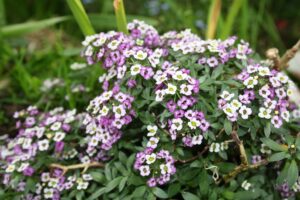May is one of the most critical months for gardeners in USDA Zone 6, as it marks the transition from the chill of early spring to the warmer summer months. This change allows for a wide range of plants to be seeded or transplanted successfully, as the risk of frost significantly diminishes. During this time, the soil warms up, creating an optimal environment for planting vegetables, flowers, fruits, herbs, and landscape plants.
Vegetables To Plant
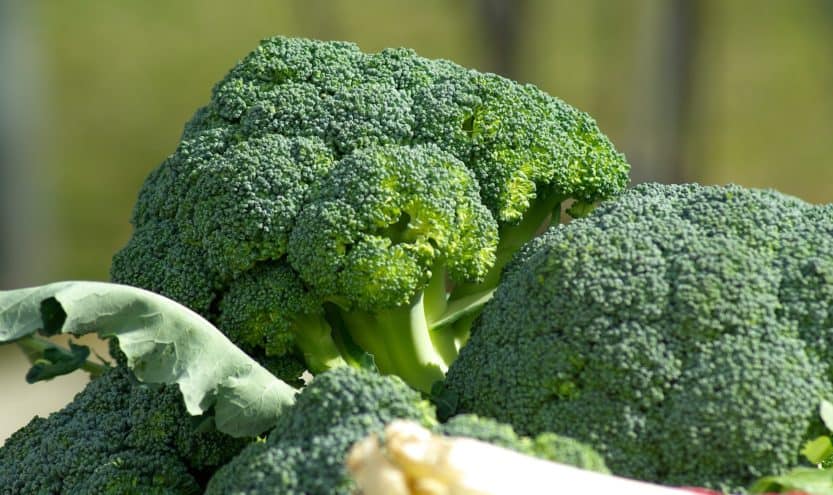
In Zone 6, the warming temperatures in May provide an excellent opportunity for planting a variety of vegetables. As soil temperatures rise and daylight hours increase, plants are primed for vigorous growth, making the month an ideal time for sowing seeds and transplanting established seedlings. Understanding each plant’s specific requirements and best practices for planting ensures a bountiful harvest. With proper attention to spacing, watering, and fertilizing, your vegetable garden can flourish, delivering fresh produce from your backyard all summer long.
Tomatoes
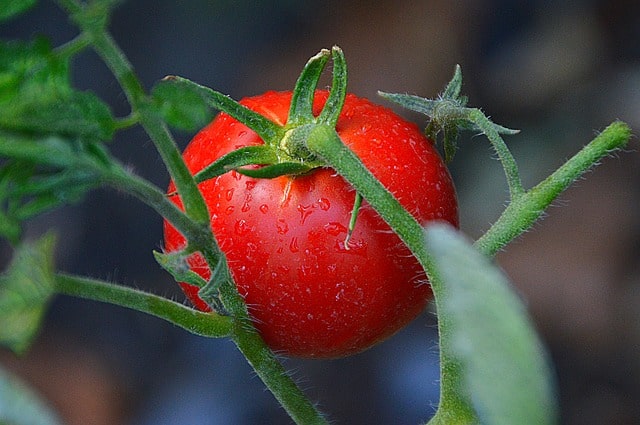
Tomatoes are a staple garden vegetable that prefer warm weather and full sun. They abound in various varieties, from small cherry tomatoes to large beefsteaks, each with unique flavors and uses. This versatility, combined with their generally easy-growing nature, makes them a popular choice for both novice and seasoned gardeners.
Planting Tips:
Transplant outdoors only after the last frost when the soil temperature reaches at least 60°F (16°C).
Use sturdy cages or stakes to support the plants as they grow.
Care Instructions:
Water deeply once or twice a week rather than shallowly every day.
Apply a balanced fertilizer every 4-6 weeks during the growing season.
Monitor for pests like aphids and diseases like blight.
Peppers

Peppers are another favorite among home gardeners, known for their vibrant colors and versatile culinary uses. They come in various types, from sweet bell peppers to spicy varieties like jalapeños and habaneros. As warm-weather lovers, they thrive in well-drained soil and benefit from full sunlight, making May an ideal month for planting.
Planting Tips:
Space plants 18-24 inches apart in a sunny spot.
Perform hardening off by exposing seedlings to outdoor conditions gradually.
Care Instructions:
Water regularly, especially during flowering and fruiting stages.
Mulch around plants to help retain moisture and suppress weeds.
Fertilize with a higher potassium fertilizer once flowering begins.
Cucumbers
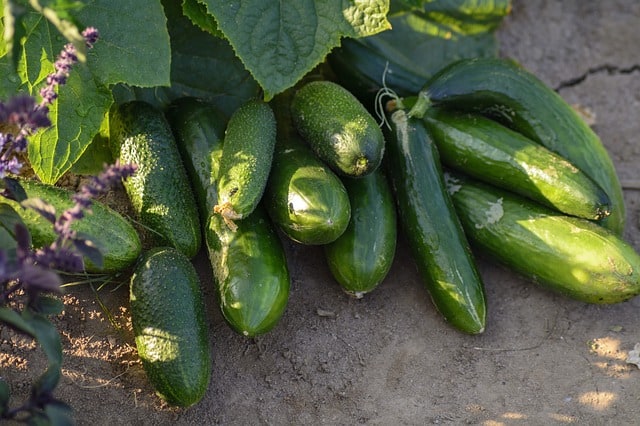
Cucumbers are quick-growing and do well when direct-sown or transplanted. Known for their refreshing taste and high water content, these vegetables can be grown in various forms, including slicing varieties for fresh eating and pickling types for preserving. Their sprawling nature makes them ideally suited for trellising, which helps save garden space and keeps fruits clean and ripe.
Planting Tips:
Sow seeds about 1 inch deep in well-drained soil.
Provide support structures for vining types to save space and improve air circulation.
Care Instructions:
Water consistently, particularly during hot weather.
Fertilize with a low-nitrogen fertilizer as they begin to set fruit.
Check regularly for pests like cucumber beetles.
Squash
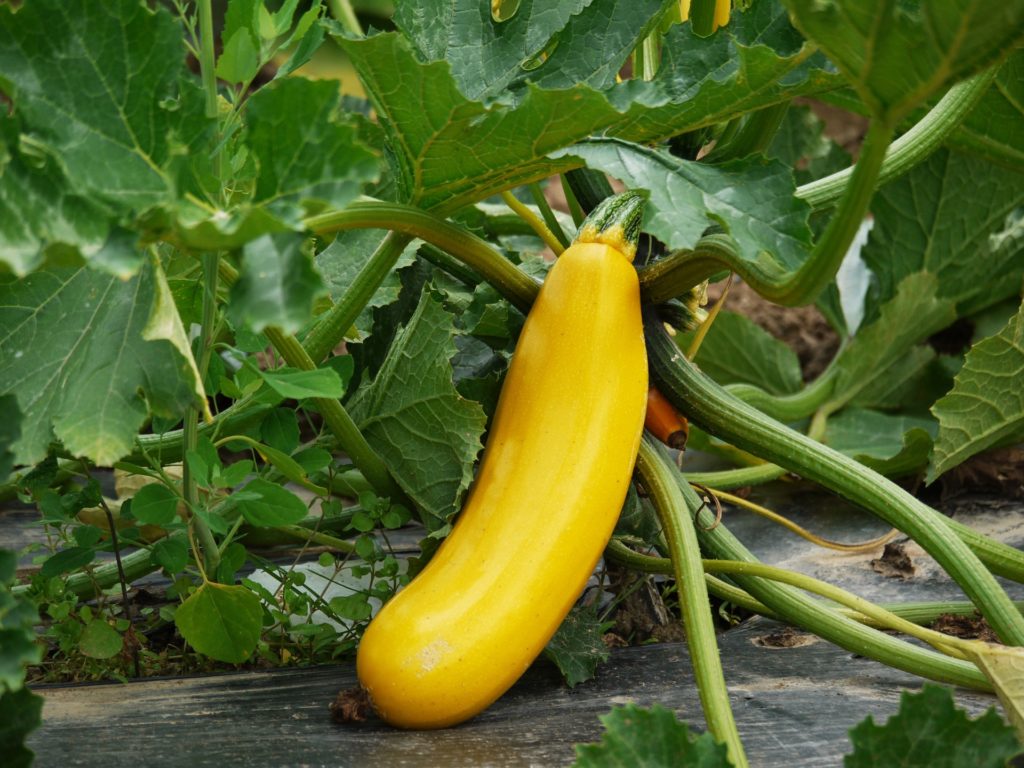
Both summer and winter squash varieties can be planted in May, adding diversity and nutrition to your garden. Squash is not only delicious but also versatile; summer squash is tender and can be eaten fresh, while winter squash can be stored for later use. Proper growing conditions, careful planting, and maintenance are essential to mitigate issues like pests and diseases.
Planting Tips:
Direct seed or transplant seedlings after the soil warms substantially.
Space summer squash plants 36 inches apart and winter squash varieties 48 inches apart.
Care Instructions:
Water deeply but infrequently to encourage deep root growth.
Keep the soil mulched to conserve moisture and suppress weeds.
Look out for squash bugs and powdery mildew.
Beans
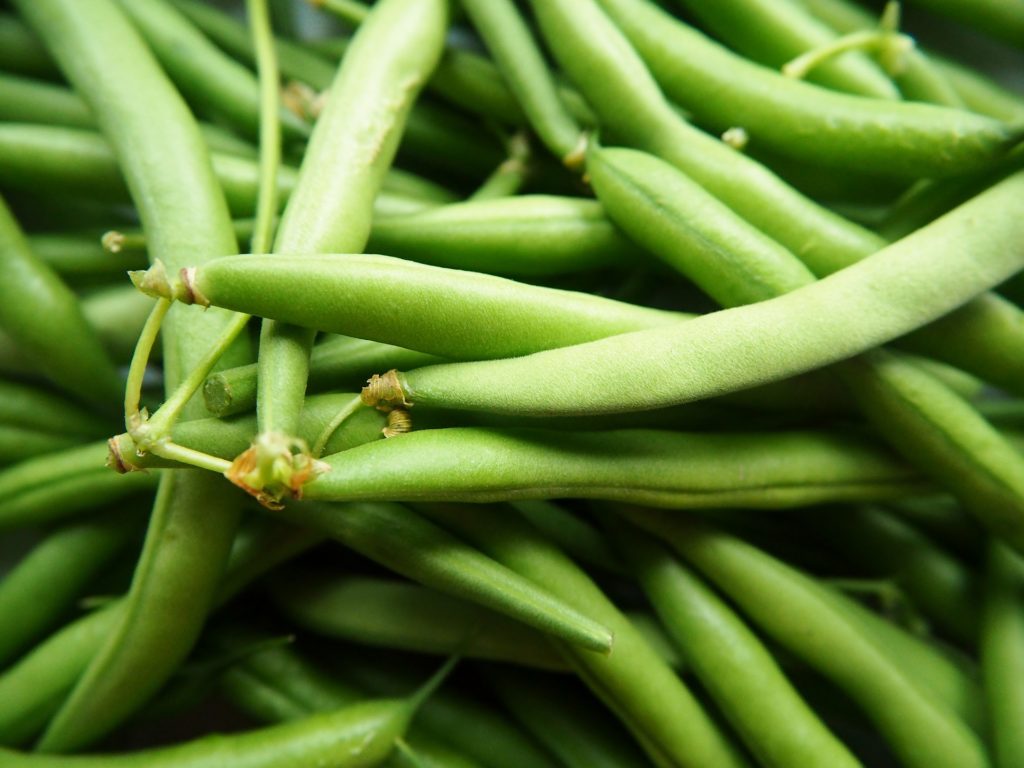
Beans are great companions for other crops, enhancing soil fertility through nitrogen-fixing properties. They are fast-growing and incredibly rewarding, yielding a delicious crop in just a short period from planting. With choices of bush beans, which grow compactly, or pole beans that climb, beans are flexible in garden design and spacing.
Planting Tips:
Direct seed in well-drained soil after the last frost, ensuring soil temperatures are warm.
Plant bush beans in blocks for better pollination.
Care Instructions:
Water regularly, especially during dry spells, but avoid over-watering.
Mulch to suppress weeds and retain soil moisture.
Harvest regularly to encourage continued production.
Corn
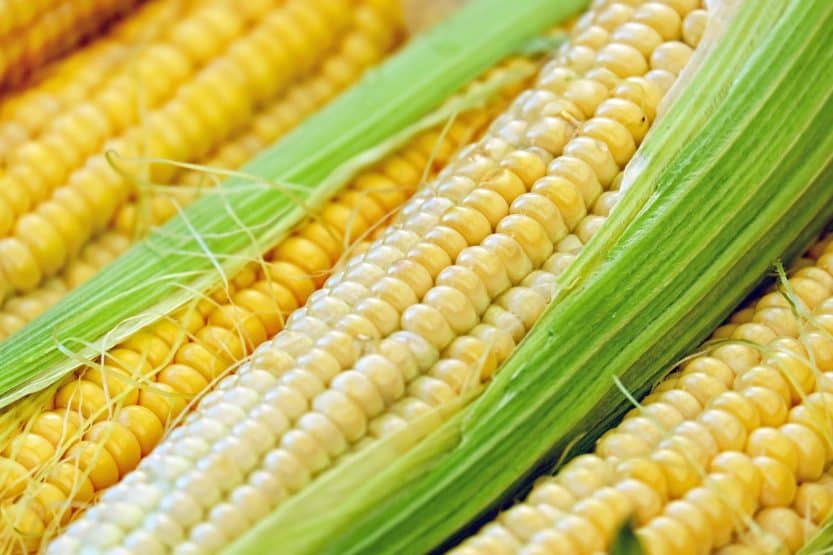
Sweet corn is a summertime favorite known for its sweet and juicy ears. It requires an adequate amount of warmth and sunlight to thrive, making May a suitable time for planting in Zone 6. Given its pollination needs, corn does best when planted in blocks rather than rows to ensure every ear gets properly fertilized.
Planting Tips:
Space seeds about 6 to 8 inches apart in nutrient-rich soil.
Harden off seedlings if starting indoors.
Care Instructions:
Water deeply and regularly, especially during tasseling and ear-forming stages.
Fertilize with a balanced fertilizer, particularly nitrogen, as they grow.
Rotate crops yearly to prevent soil nutrient depletion.
Carrots
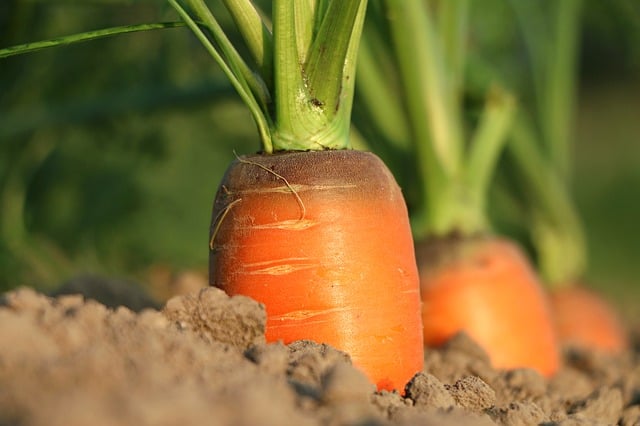
Carrots are cool-season crops that thrive in cooler early-summer temperatures. They are not only nutritious but also easy to grow, making them a garden staple. Ensuring loose, well-drained soil is key to achieving sweet, straight roots, as compacted soil can hinder their development.
Planting Tips:
Sow seeds directly in early May; prepare the soil by removing rocks and debris.
Thin seedlings when they are about 2 inches tall to avoid overcrowding.
Care Instructions:
Water consistently to prevent splitting; keep the soil moist but not waterlogged.
Apply mulch to retain soil moisture.
Monitor for pests like carrot rust flies.
Beets
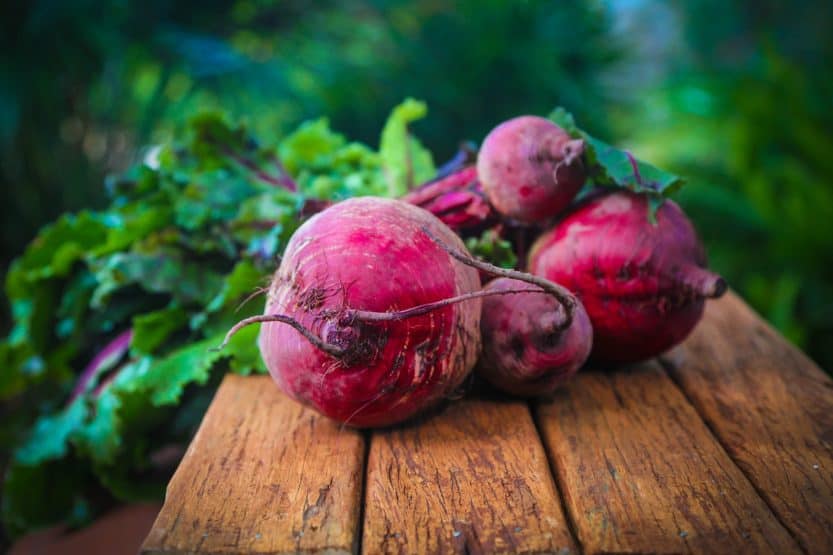
Beets are nutrient-packed vegetables that thrive in the cooler weather of early summer. They are easy to grow and offer both edible roots and greens, making them a versatile addition to any garden. When planting beets, it’s crucial to maintain consistent moisture for optimal root development and flavor.
Planting Tips:
Sow seeds about 1 inch deep and 12-18 inches apart.
Thin beet seedlings to ensure enough space for roots to grow smoothly.
Care Instructions:
Water regularly, keeping the soil consistently moist but well-drained.
Apply organic compost to enhance nutrient availability.
Harvest when the roots are about the size of a golf ball for the best flavor.
Kale
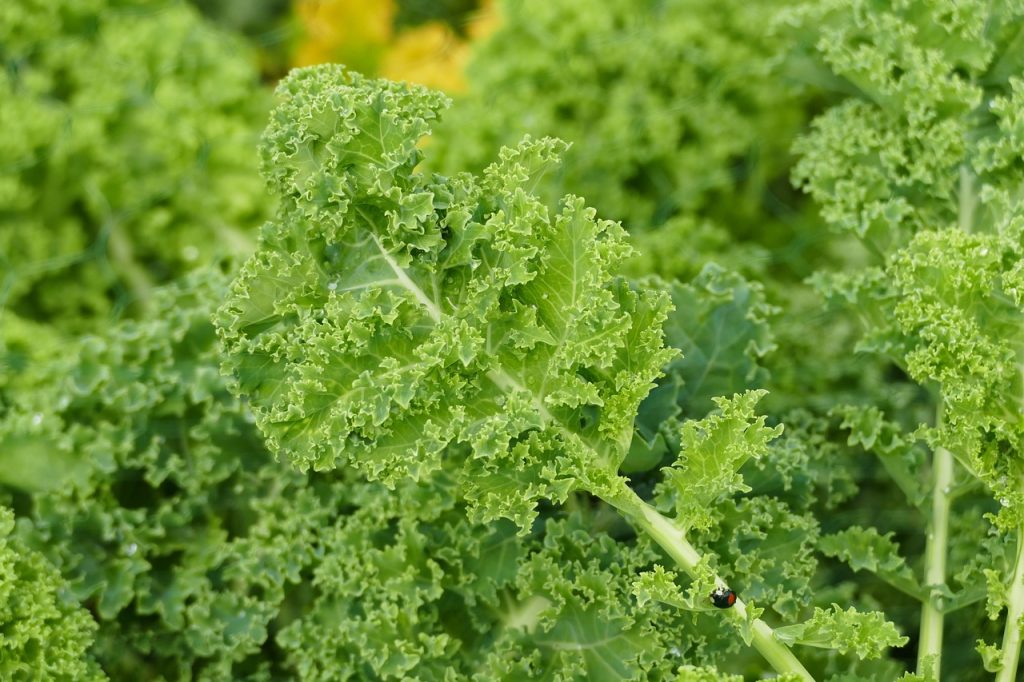
Kale is a nutritious leafy greens crop that can handle the warmer weather of May. Known for its hardiness and nutritional benefits, this leafy vegetable can be harvested continuously, providing fresh greens throughout the season. When planting kale, good care helps prevent issues like bolting and pests.
Planting Tips:
Direct seed or transplant seedlings about 12-18 inches apart in rich, well-draining soil.
Consider starting seeds indoors a few weeks prior to planting outside.
Care Instructions:
Water consistently, especially in sunny conditions.
Use row covers to protect against pests like aphids and caterpillars.
Fertilize with nitrogen-rich fertilizer during the growing season.
Spinach
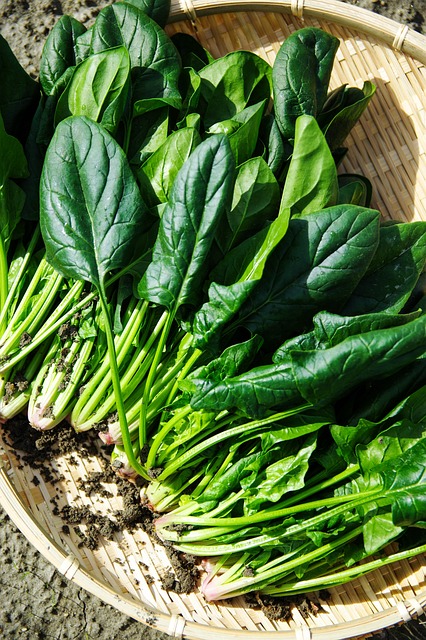
Spinach is a cool-weather crop that thrives in the mild temperatures of early-to-late spring and can be sown again in late summer. Although sensitive to heat, May offers a great opportunity to plant spinach for a summer crop. It is rich in nutrients and provides a great harvesting window if planted correctly.
Planting Tips:
Sow seeds directly in well-drained soil, ensuring they are spaced adequately.
Choose bolt-resistant varieties for the best results.
Care Instructions:
Water regularly to keep the soil moist; avoid drying out during germination.
Fertilize lightly at planting; excessive fertilizer can lead to poor flavor.
Harvest young leaves to encourage further growth.
Flowers To Plant
May is peak flower planting time in Zone 6, offering various options to bring color and life to your garden. As spring unfolds, the warming soil creates excellent conditions for flowering plants to establish and thrive. By selecting the right varieties for your landscape and understanding their specific care requirements, you can maintain a blooming garden all summer long. Flowers not only enhance the aesthetic appeal of your outdoor space but also attract pollinators, enriching the ecosystem.
Marigolds
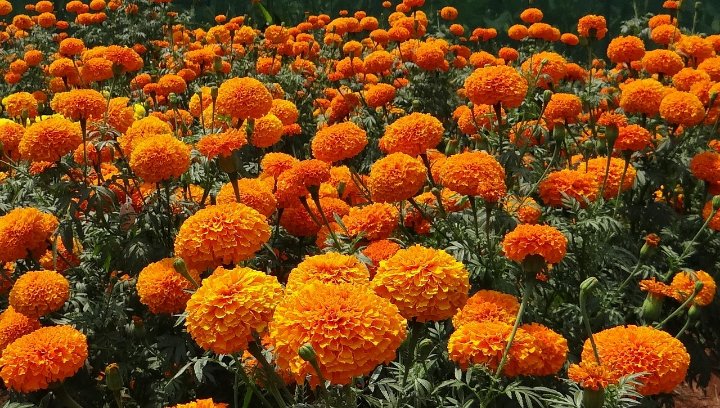
Marigolds are renowned for their vibrant colors and pest-repelling qualities, making them a wonderful addition to any garden. They are easy to grow and provide long-lasting blooms throughout the summer, while their robust nature allows them to withstand varying weather conditions. By incorporating marigolds into vegetable gardens, you can effectively deter harmful pests and create a more diverse planting scheme.
Planting Tips:
Sow seeds directly into the garden or transplant seedlings, spacing about 10-12 inches apart.
Choose a sunny location for maximum growth and bloom.
Care Instructions:
Water moderately; avoid overhead watering to reduce mildew risk.
Remove spent blooms to encourage continued flowering.
Fertilize with a balanced fertilizer occasionally.
Zinnias
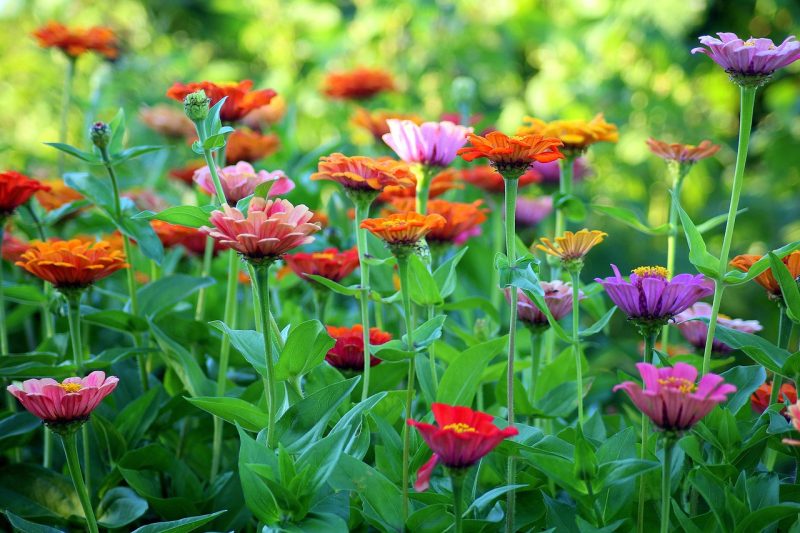
Zinnias are vibrant, low-maintenance flowers that thrive in warm temperatures and are excellent for attracting butterflies. They come in a myriad of colors and sizes, making them perfect for borders, cut flower arrangements, and garden beds. Planting zinnias in May allows for a beautiful display throughout the summer, as they flourish in sunny spots with well-draining soil.
Planting Tips:
Direct sow seeds in well-prepared soil after the last frost, spacing them 12-24 inches apart.
Consider mixing various heights for a layered effect.
Care Instructions:
Water regularly to maintain consistent moisture, especially during dry spells.
Deadhead regularly to promote more blooms throughout the summer.
Protect from powdery mildew by ensuring good airflow.
Sunflowers
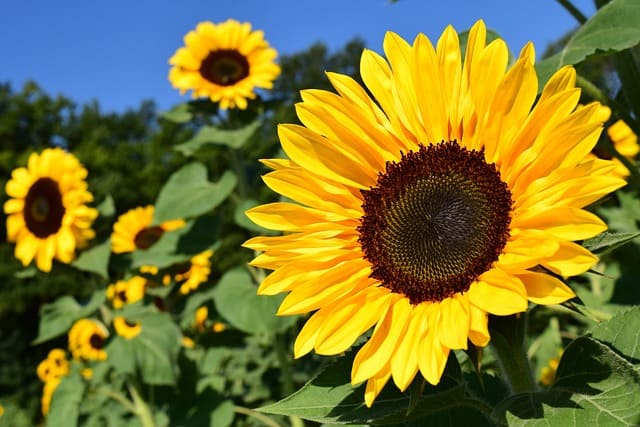
Sunflowers are iconic summer flowers that not only provide spectacular visuals but also yield edible seeds. Their tall, cheerful blooms are perfect for adding height and interest to your garden beds. Sunflowers’ ability to thrive in a range of soil types makes them particularly versatile, allowing gardeners to create stunning displays throughout the growing season.
Planting Tips:
Sow seeds directly in warm soil, and space them about 6-12 inches apart.
Choose varieties suited to your garden’s height requirements.
Care Instructions:
Water deeply once or twice a week during dry spells.
Use stakes for larger varieties susceptible to wind damage.
Harvest seeds when the heads turn brown and the seeds become firm.
Cosmos
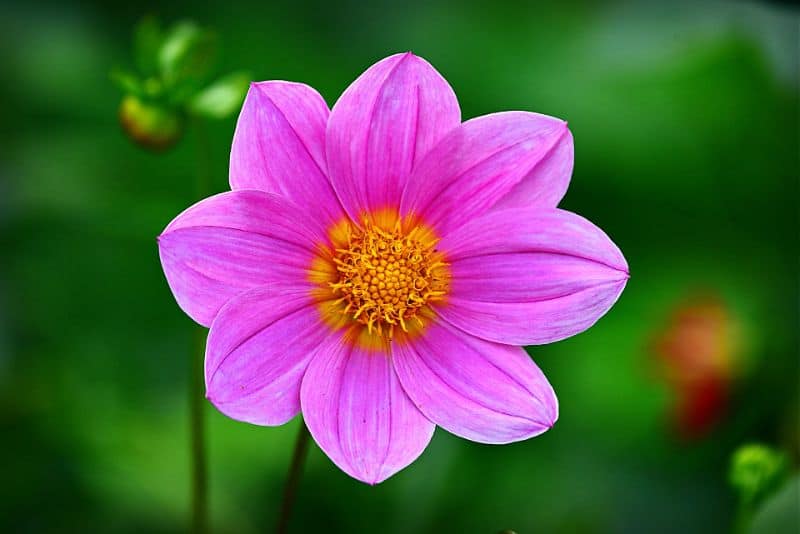
Cosmos are vibrant, airy annual flowers that are easy to grow and ideal for attracting pollinators. Their delicate blooms and feathery foliage create a light, whimsical feel in any garden bed. They thrive in poor soils and require minimal maintenance, making them a popular choice for both ornamental and wildflower gardens.
Planting Tips:
Sow seeds directly in the garden once frost risk has passed, spacing them about 12-18 inches apart.
They do well in poor soils, so avoid over-fertilizing.
Care Instructions:
Water regularly while they establish, then reduce watering as they mature.
Pinch back young plants to encourage bushier growth.
Cut flowers regularly to stimulate more blooms.
Petunias

Petunias are versatile annuals known for their vibrant blooms and ability to thrive in various settings, including borders, hanging baskets, and containers. They come in multiple colors and patterns, making them a favorite among gardeners seeking a cheerful display. With regular care and maintenance, petunias can keep your garden colorful from spring until frost.
Planting Tips:
Transplant seedlings into well-draining, slightly amended soil, about 12 inches apart.
They perform best in full sun.
Care Instructions:
Water consistently and avoid letting the soil dry out completely.
Remove spent blooms to prolong the flowering period.
Fertilize bi-weekly with a water-soluble fertilizer for peak performance.
Snapdragons
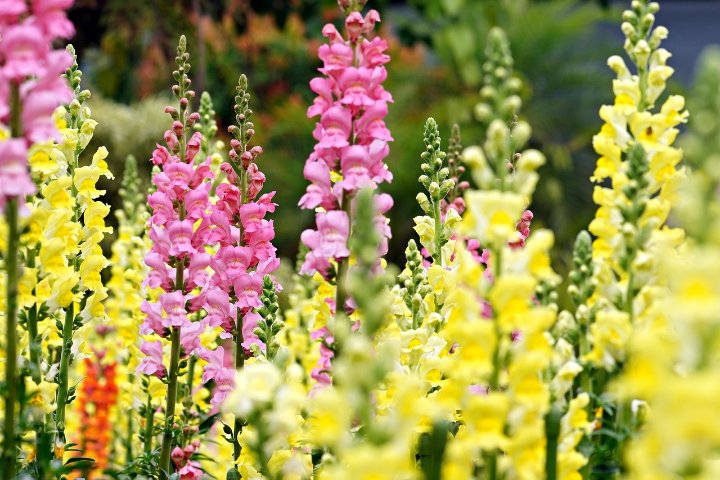
Snapdragons produce charming blooms with a unique flower shape that adds visual interest to gardens. They thrive in cooler weather, making May an ideal time for planting to ensure they bloom beautifully throughout summer. Available in a range of colors and heights, snapdragons can be used effectively in borders or as cut flowers.
Planting Tips:
Sow seeds directly in the garden during May or transplant seedlings.
Space them about 6-12 inches apart in rich, loamy soil.
Care Instructions:
Water regularly, ensuring they have sufficient moisture, particularly during flowering.
Stake taller varieties to prevent them from toppling over.
Remove wilted blooms to encourage additional flowering.
Daylilies
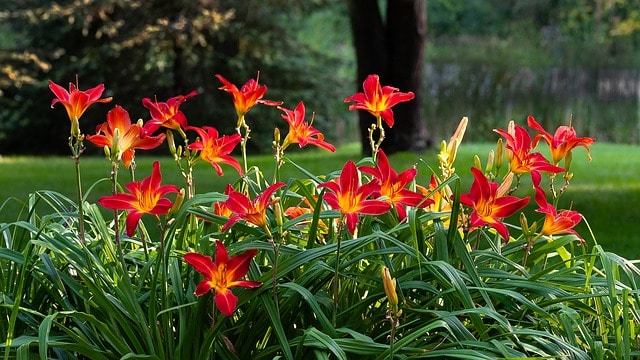
Daylilies are perennials known for their hardiness and beauty, producing striking blooms that last only a day but continuously offer new flowers throughout the season. They grow well in a variety of conditions and are relatively low-maintenance, making them a popular choice for gardeners looking to introduce color and texture to their landscapes.
Planting Tips:
Plant bare-root daylilies in well-draining soil, spacing them about 24 inches apart.
Choose a sunny or partially sunny location for best blooming.
Care Instructions:
Water well during their first year to establish roots, then they require less frequent watering.
Fertilize once a year in early spring with a balanced fertilizer.
Remove spent flowers and foliage to maintain appearance.
Coneflowers
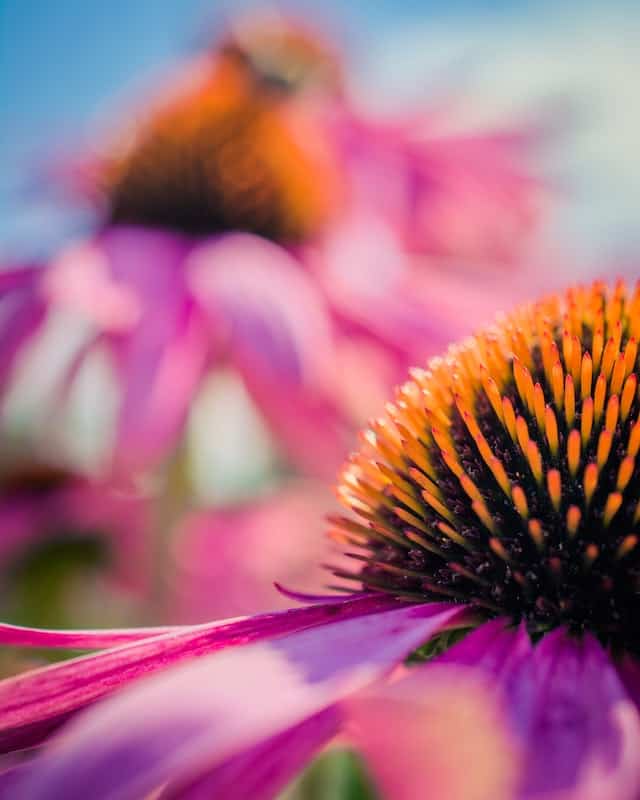
Echinacea, or coneflowers, are drought-tolerant perennials that not only enhance your garden visually but are also beneficial for attracting pollinators. Known for their resilience and beauty, these flowers thrive in sunny locations and can add texture and color to borders or wildflower gardens.
Planting Tips:
Plant in well-drained soil; space them about 18-24 inches apart for optimal growth.
They thrive in sunny conditions, making thoughtful positioning essential.
Care Instructions:
Water occasionally; they are quite drought-resistant once established.
Deadhead spent blooms to encourage additional flowering.
Cut back in late fall to tidy the garden and allow more growth next spring.
Dianthus
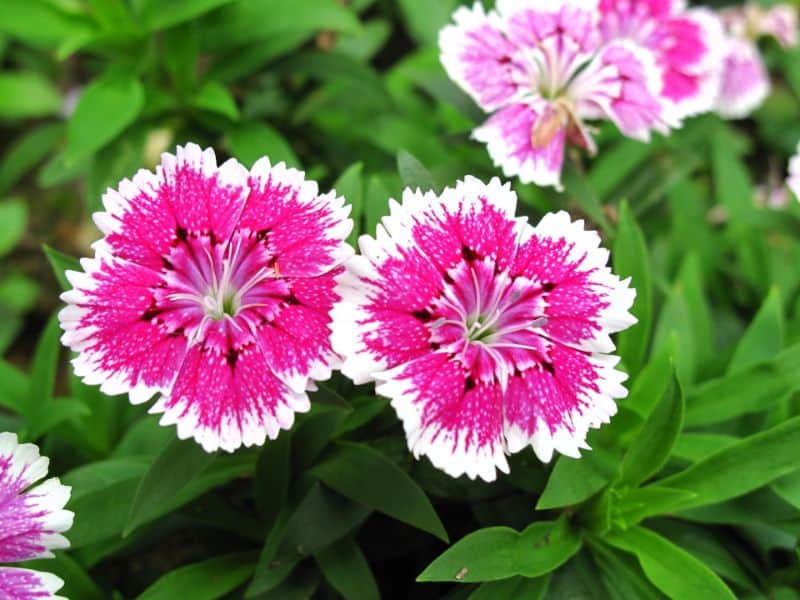
Dianthus produces colorful blooms with a delightful fragrance, making them a favorite in cottage gardens and formal borders alike. Their relatively compact growth and variety of colors add visual interest to any landscape. Planting these perennial flowers in May provides them enough time to establish deep roots before summer heat arrives.
Planting Tips:
Plant in well-draining soil, ensuring they have good air circulation; space them 10-12 inches apart for healthy growth.
Consider grouping varieties for increased visual impact.
Care Instructions:
Water regularly to keep the soil slightly moist, particularly during dry spells.
Deadhead flowers to prolong blooming and promote bushier growth.
Fertilize every four weeks with a balanced fertilizer during the growing season.
Rudbeckia
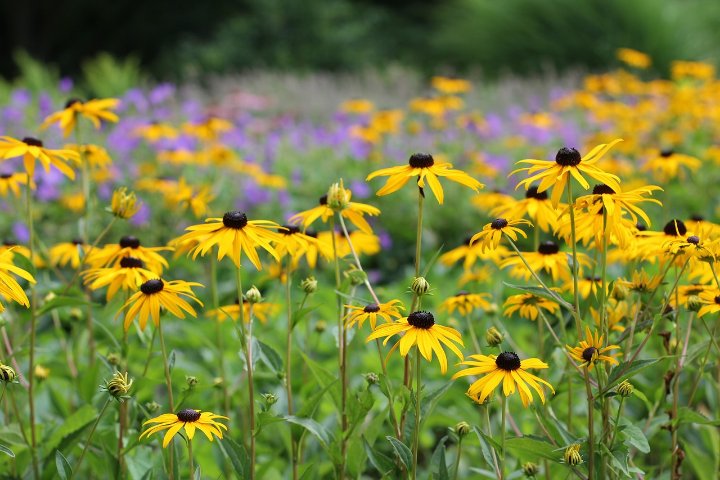
Black-eyed Susans are cheerful, hardy perennials that thrive in a range of conditions and can produce stunning displays from mid-summer to fall. They are tolerant of drought and heat, making them ideal for low-maintenance gardens. Their vibrant yellow blooms and dark centers make them an eye-catching addition.
Planting Tips:
Space plants about 12-18 inches apart in well-drained soil with full sunlight.
They can be direct-seeded or transplanted.
Care Instructions:
Water regularly until established; they are drought-tolerant once mature.
Deadhead blooms to prolong flowering.
Fertilize in early spring with a balanced fertilizer for best results.
Perennial Flowers to Plant
Perennials hold the promise of returning beauty year after year, making them an excellent investment for long-term gardens. Planting an array of perennials in May allows them to establish strong root systems and enhances the garden’s visual interest throughout the growing season. Perennials also help to improve soil quality, support pollinators, and maintain a rich biodiversity in your outdoor space. By selecting a variety of species that bloom at different times, you can ensure that your garden is alive with color from spring through fall.
Hostas
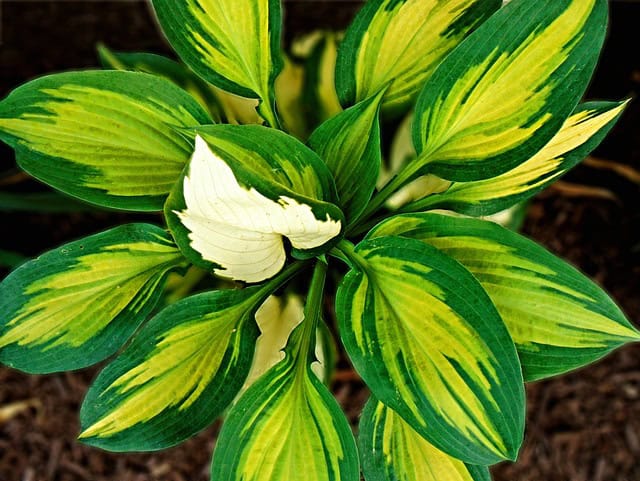
Hostas provide lush foliage and thrive in shaded or partially shaded locations, making them perfect for woodland gardens, borders, or areas where sunlight is limited. They come in a variety of leaf shapes and colors, adding textural elements to the landscape. Effective care can result in impressive size and growth, allowing hostas to fill spaces beautifully.
Planting Tips:
Dig a hole large enough to accommodate the root system and plant in a shady spot.
Space them at least 18 inches apart to prevent overcrowding.
Care Instructions:
Keep the soil consistently moist but not soggy; mulch can help retain moisture.
Fertilize with a balanced fertilizer early in the spring.
Divide established hostas every 3-5 years for rejuvenation and propagation.
Peonies
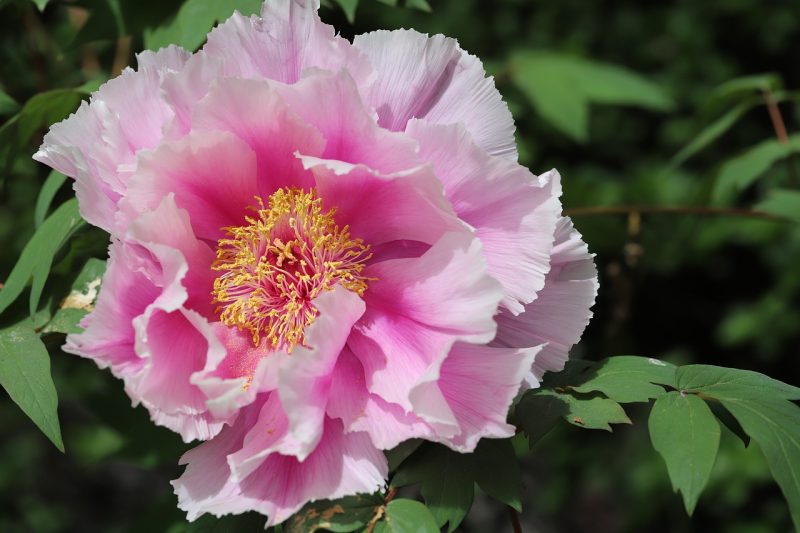
Peonies are cherished for their lush blooms and captivating fragrance, often becoming the centerpiece of many flower gardens. With their long lifespan and low maintenance requirements, they’re an excellent addition to your flowering landscape. When planted correctly, peonies can produce an incredible display year after year.
Planting Tips:
Plant bare root peonies 2 inches deep in well-drained soil with at least 6 hours of sunlight.
Ensure ample space, ideally 3-4 feet apart, for optimal airflow and growth.
Care Instructions:
Water consistently during dry spells; peonies dislike sitting in wet soil.
Fertilize with bone meal to promote flowering and overall health.
Support stems with stakes to prevent flopping over as they grow.
Lavender
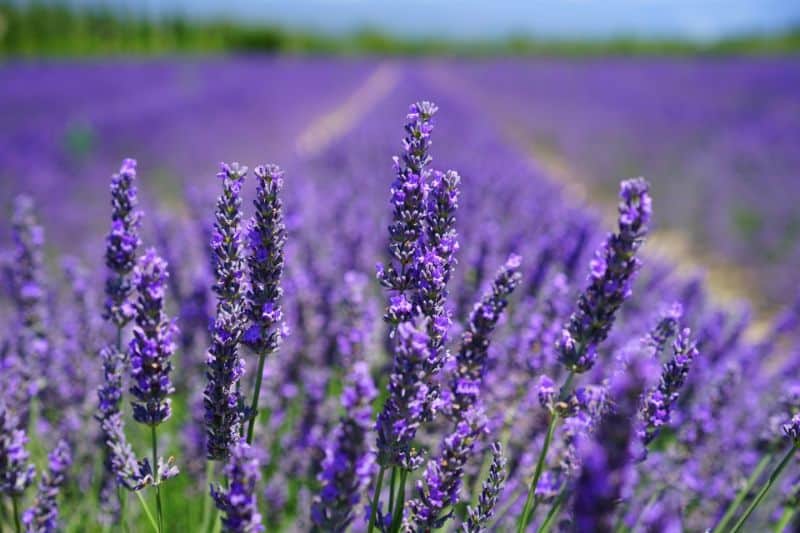
Lavender is a beloved perennial known for its attractive, fragrant blooms and drought resistance. It thrives in sunny locations with well-drained soil and can be attractive to beneficial insects like bees. Lavender’s aromatic leaves can be harvested for culinary and therapeutic purposes, and with proper care, it can withstand the test of time in gardens.
Planting Tips:
Select a location with well-drained, sandy soil and full sun exposure.
Space them 12-24 inches apart to promote airflow.
Care Instructions:
Water less frequently as they establish; they should dry out between waterings.
Prune back at the end of the blooming season to maintain shape.
Fertilize sparingly; too much nitrogen can lead to weak stems.
Salvia
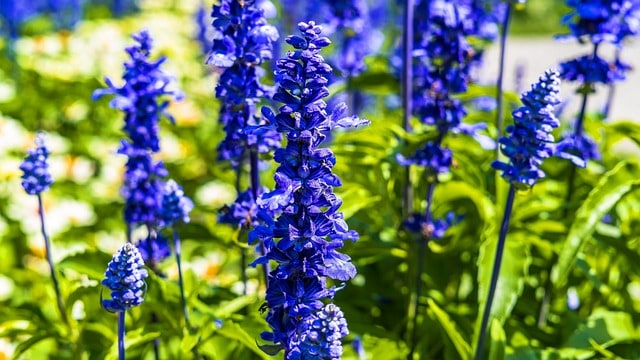
Salvia is a versatile perennial known for its vibrant blooms and affinity for attracting pollinators such as bees and butterflies. With various available species, salvia offers options for different garden designs, including borders, rock gardens, and wildflower settings. They thrive in full sun and well-draining soil, ensuring robust growth and impressive blooms.
Planting Tips:
Plant in well-draining soil with full sun, spacing them 18-24 inches apart.
May can be a good time for planting, ensuring establishment before summer heat.
Care Instructions:
Water regularly; however, avoid overwatering as they thrive in drier conditions.
Deadhead spent flowers to encourage a second bloom and keep plants tidy.
Cut back in fall to promote healthy growth the following spring.
Coral Bell
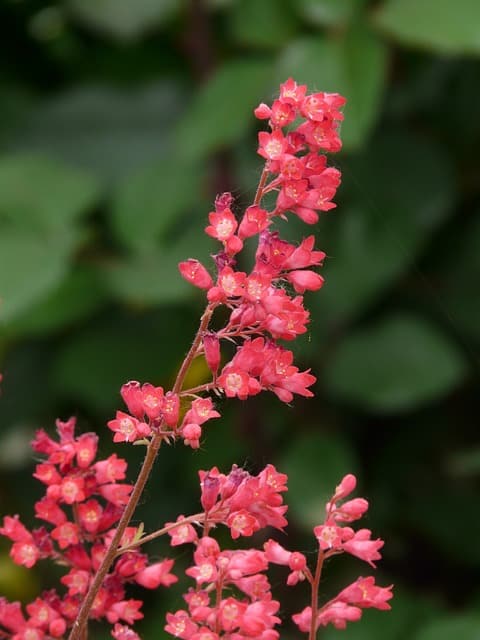
Hellebores, or coral bells, are hardy perennials that thrive in shady areas, producing lovely blooms in late winter to early spring. Their unique foliage and flowers make them a standout choice for gardens that may not receive direct sunlight. Placing them in a shady spot can enhance their beauty and longevity, adding year-round interest to the garden.
Planting Tips:
Use well-drained but moisture-retentive soil and consider spacing them 12-18 inches apart.
They do well with some morning sun if sufficient shade is available.
Care Instructions:
Water regularly to maintain a moisture balance; avoid letting them dry out entirely.
Fertilize lightly, as excessive nutrients can lead to lush foliage with fewer blooms.
Remove spent flowers to prevent self-seeding and maintain appearance.
Shasta Daisy
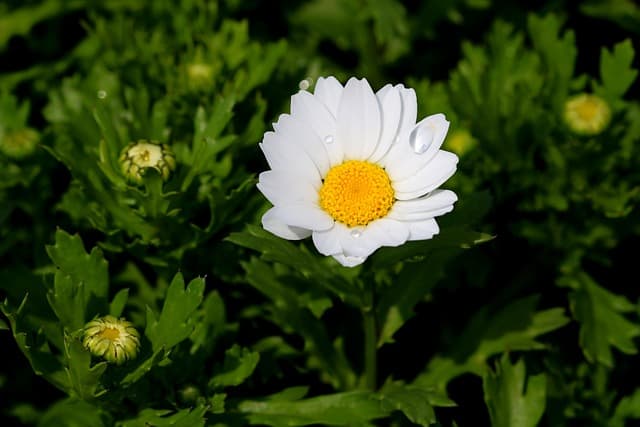
Shasta daisies are classic perennials that bring cheerful blooms. Known for their resilience and ability to thrive in various conditions, these flowers can be used in borders, cutting gardens, or even wildflower meadows. Planting them in May gives them a chance to establish strong roots before the heat of summer arrives.
Planting Tips:
Sow or transplant in full sunlight with well-drained soil, spacing them 18-24 inches apart.
Consider protecting them with light mulch to retain moisture.
Care Instructions:
Water regularly, aiming for consistent but not oversaturated soil.
Deadhead flowers to promote more blooms throughout the summer.
Cut back in late fall to tidy the garden and promote healthy growth.
Astilbe

Astilbe shines in partial shade with its feather-like plumes creating a lovely display in gardens. They produce showy blooms in varying shades and thrive in moist soil, making them ideal for planting near water features or in shaded woodland gardens. Their persistent beauty throughout the summer, paired with vibrant colors and textures, adds a stunning contrast to dark foliage.
Planting Tips:
Plant with enough space to allow for spreading, ideally 18-24 inches apart.
Amend the soil with organic matter to retain moisture effectively.
Care Instructions:
Water consistently; they thrive in moister conditions than many perennials.
Fertilize in early spring to enhance blooming potential.
Cut back finishing blooms in the autumn to promote new growth.
Black-Eyed Susan
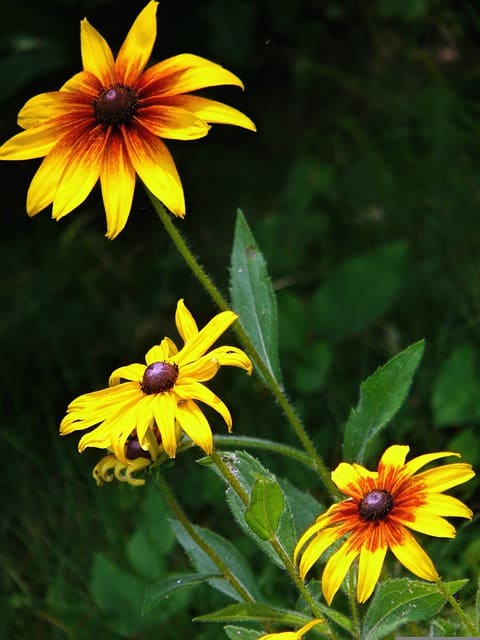
Rudbeckia hirta, or black-eyed Susan, is a vibrant perennial for summer gardens. Known for their bright yellow blooms and dark centers, these flowers are hearty and require minimal care once established. Planting black-eyed Susans in groups results in stunning visuals while attracting birds and beneficial insects to your garden space.
Planting Tips:
Space about 12-18 inches apart in full sun and rich, well-drained soil.
They can be direct-seeded or transplanted.
Care Instructions:
Water regularly until established; they are drought-tolerant once mature.
Deadhead blooms to prolong flowering.
Fertilize in early spring with a balanced fertilizer for best results.
Russian Sage
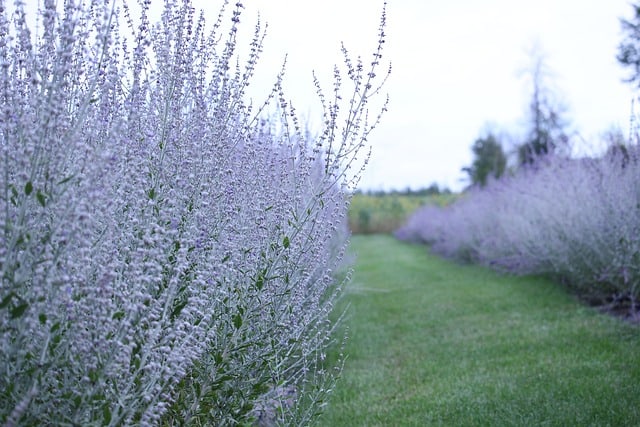
Russian sage is a drought-tolerant perennial known for its aromatic leaves and striking lavender-blue flowers. This plant is versatile, adapting to a variety of soil types, and its ability to thrive in hot, dry locations makes it an excellent choice for low-maintenance gardens. The silvery foliage and airy blooms also work well to create contrast in any setting.
Planting Tips:
Space plants 24-36 inches apart in full sun; these can handle poor soils.
Avoid drowning them in excessive fertilizer; they thrive in less fertile regions.
Care Instructions:
Water once established but avoid waterlogged conditions.
Prune hard in early spring before new growth emerges for bushier plants.
Monitor for pests like spider mites, which may thrive in dry conditions.
Foxglove
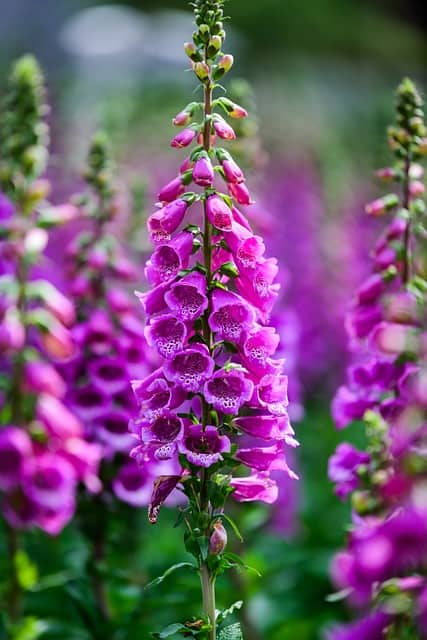
Foxglove produces tall flower spikes adorned with tubular blooms that add elegance to gardens. They thrive in partial shade and can become a striking feature in flower borders or cottage gardens. Though they are biennials, planting them in May ensures they will either bloom the following summer or give you stunning foliage.
Planting Tips:
Sow seeds in rich, well-draining soil and ensure partial shade.
Space plants about 12 inches apart for optimal airflow.
Care Instructions:
Water consistently, especially during dry periods to encourage flowering.
Avoid excessive fertilization; too much can lead to weak stems.
Cut back in late fall to promote healthy growth next season.
Bulbs To Plant
While spring is often considered the primary season for planting bulbs, May offers opportunities to plant summer-blooming bulbs that will bring tremendous beauty to your garden. Bulbs are an easy and effective way to add vibrant color and visual interest to landscapes, with many varieties providing lovely scents as well. By understanding the specific requirements for each type of bulb, you can create a rich tapestry of blooms that will enhance your garden throughout the summer months.
Gladiolus

Planting gladiolus corms in May is perfect for stunning cut flowers throughout the summer. These tall, elegant blooms deliver a dramatic burst of color, making them ideal for both borders and bouquets. Gladiolus are easy to grow, requiring just a bit of care and attention to thrive.
Planting Tips:
Plant corms about 4-6 inches deep in well-drained soil.
Space them about 6-12 inches apart for airflow.
Care Instructions:
Water consistently throughout the growing season, especially during dry spells.
Cut flowers for indoor arrangements; this encourages more blooms.
Lift corms in fall for winter storage in colder areas.
Dahlia
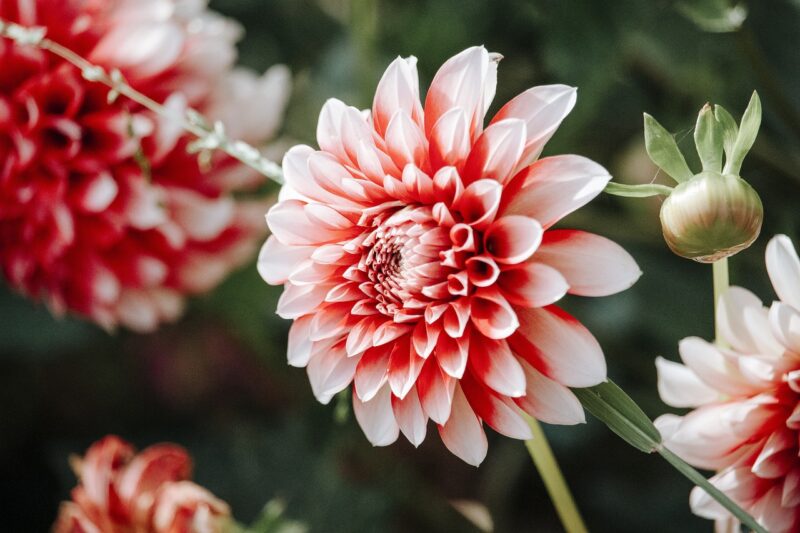
Dahlia tubers should be planted in well-drained soil after the threat of frost subsides, bringing stunning, lush colors to your garden. With a variety of shapes, sizes, and colors, dahlias add texture and flair to floral arrangements. They require consistent care but reward your efforts with extravagant blooms.
Planting Tips:
Plant tubers about 4-6 inches deep, ensuring they are in a sunny location.
Space larger varieties 18-24 inches apart to accommodate growth.
Care Instructions:
Water regularly, keeping tubers moist without drowning them.
Fertilize monthly with a balanced fertilizer throughout the growing season.
Pinch back early growth to encourage fuller plants with more flowers.
Canna Lilies
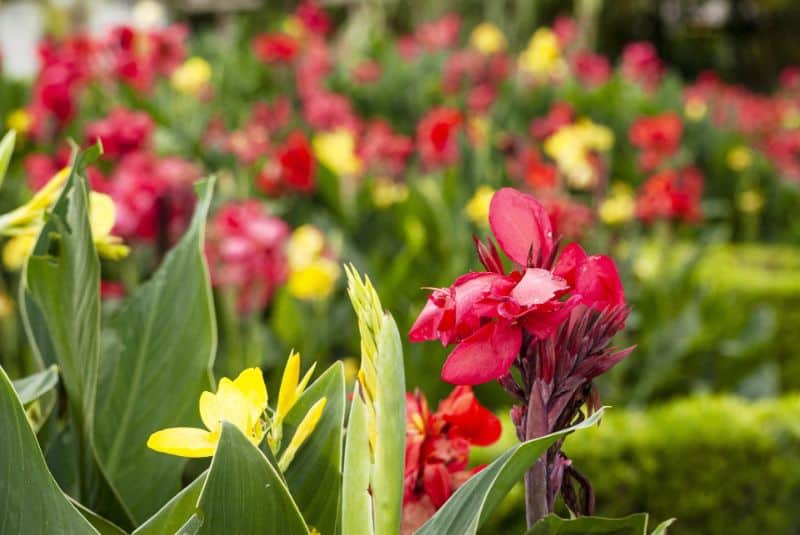
Canna lilies thrive in sunny, rich soils, boasting stunning foliage and flamboyant flowers in colors ranging from red and orange to yellow. These exotic plants can grow remarkably tall, making them a popular choice for tropical-themed gardens or as dramatic focal points.
Planting Tips:
Plant rhizomes 4-6 inches deep in well-draining soil.
Space plants approximately 18-24 inches apart for optimal growth.
Care Instructions:
Water consistently, ensuring they remain moist but not soggy.
Fertilize bi-weekly during the growing season for maximum blooms.
Cut back foliage at the end of the season for winter protection.
Calla Lilies
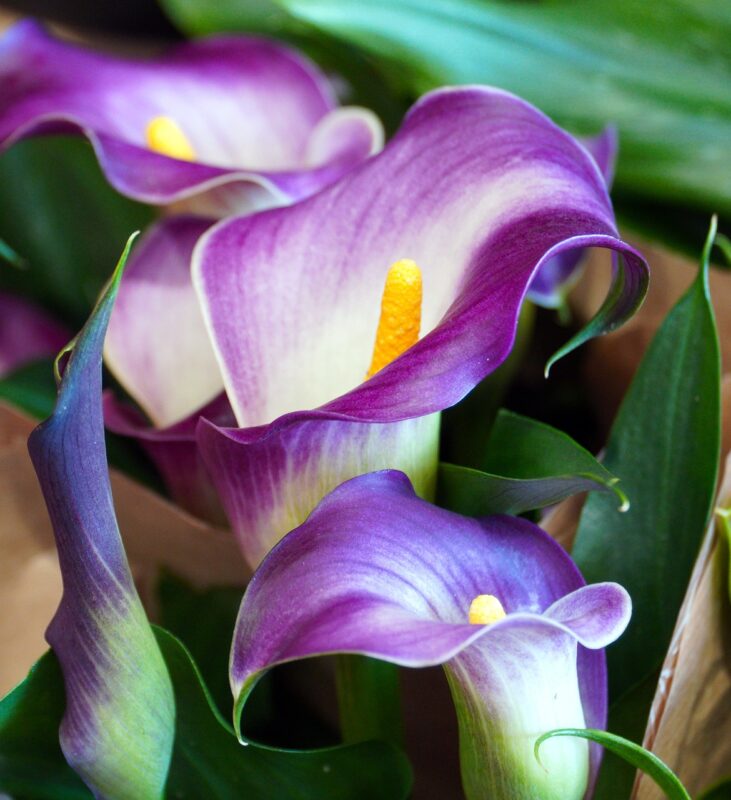
Calla lilies, known for their graceful, trumpet-shaped blooms, thrive in bright locations with rich, well-drained soil. Planting them in May allows them to establish before summer’s heat arrives, ensuring vibrant blooms throughout the season. They also work well in mixed borders and containers.
Planting Tips:
Plant bulbs 3-4 inches deep in well-drained soil with ample sunlight.
Allow space of about 12-16 inches between bulbs.
Care Instructions:
Keep soil moist but avoid over-watering, particularly in winter.
Fertilize monthly with a diluted liquid fertilizer during the growing season.
Lift and store bulbs in winter if your gardening zone doesn’t support year-round growth.
Gloriosa Lily
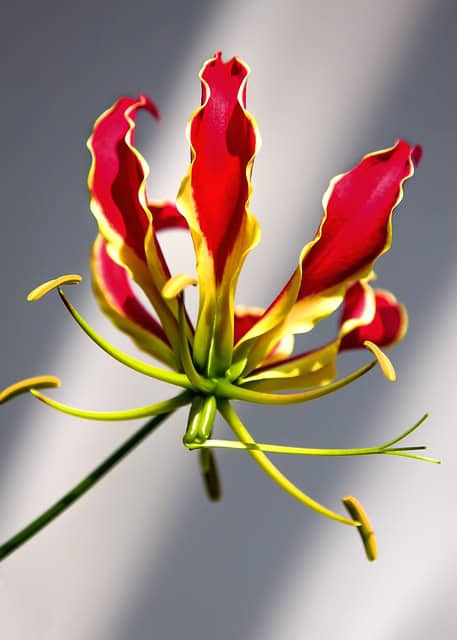
Gloriosa lilies prefer warm, inviting climates and produce extraordinary flowers with unique shapes. Fiercely beautiful and exotic, they can bring a true tropical feel to your garden. They flourish in sunny locations with well-drained soil but may require extra support as they climb.
Planting Tips:
Plant bulbs 2-4 inches deep in rich, well-drained soil with full sun.
Consider using trellises or supports for vine growth.
Care Instructions:
Water regularly to hydrate the plant but ensure drainage to prevent rot.
Fertilize bi-weekly with a balanced fertilizer during growth.
Monitor closely for pests, particularly aphids on the new shoots.
Freesia
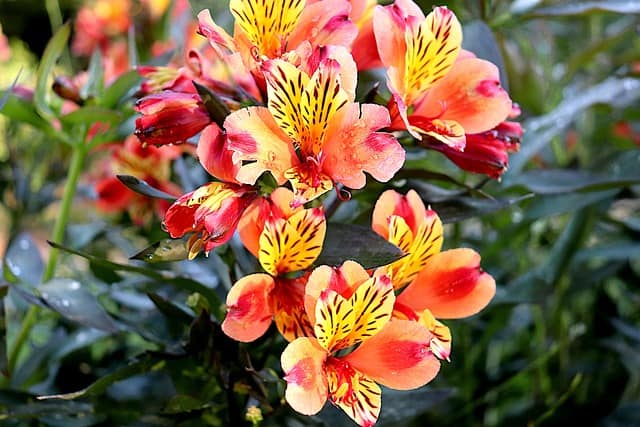
Freesia corms thrive in sunny conditions, offering fragrant and colorful blooms throughout the summer. These flowers are well-loved in gardens and bouquets for their delightful scents and vibrant colors. They prefer warm temperatures, making May an ideal time for planting.
Planting Tips:
Plant corms 2-3 inches deep in well-drained soil.
Space about 6-10 inches apart to allow for spreading.
Care Instructions:
Water thoroughly after planting to assist establishment, then allow to dry between waterings.
Fertilize during the growing season, cutting blooms for maximum exposure.
After blooming, allow foliage to die back naturally to replenish corms.
Tuberose

Tuberose bulbs enjoy warm soil and rich nutrients, producing exquisite and fragrant flowers. Known for their striking beauty and delightful scent, they can enhance any garden or landscape. Proper care and attention will ensure these stunning blooms last throughout the summer months.
Planting Tips:
Plant bulbs 2-4 inches deep in rich, well-drained soil.
Space plants about 12-14 inches apart for foundational growth.
Care Instructions:
Water regularly to maintain slight moisture throughout the growing season.
Fertilize monthly with a balanced fertilizer to encourage flowering.
Cut the spent blooms for fresh arrangements to keep the plant blooming.
Dutch Iris

Dutch irises should be planted in sunny, well-drained places to ensure robust growth and blooms. They add stunning vertical elements to garden beds, and their striking colors make them ideal for mixed borders or as cut flowers. Planting in May allows them to grow strong roots before blossoming in summer.
Planting Tips:
Plant bulbs about 6-8 inches deep, spacing them 4-6 inches apart.
Ensure they have good drainage to prevent rot.
Care Instructions:
Water them moderately, ensuring they remain moist but not waterlogged.
Fertilize after blooming with a low-nitrogen fertilizer to maintain health.
Cut back foliage after flowering to tidy up the garden.
Elephant Ears

Elephant ear bulbs grow large foliage that can transform any space into a tropical paradise. Their impressive leaves provide hat-like shade and striking visual interest in gardens and landscapes. They require moisture and warmth to thrive, making May an ideal time for planting.
Planting Tips:
Plant bulbs in rich, well-drained soil about 4-6 inches deep.
Space them about 3-5 feet apart due to their large size.
Care Instructions:
Water consistently; they thrive in moist conditions.
Fertilize every few weeks with a balanced fertilizer during the growing season.
Protect them from frost by lifting bulbs in colder regions.
Snowdrops
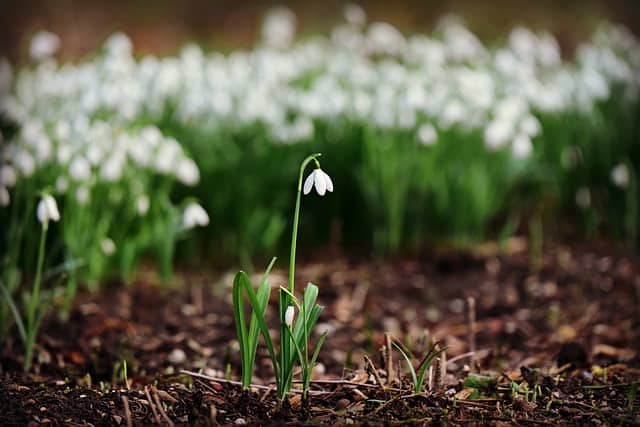
Snowdrop bulbs can be planted in May for flowering in spring, providing one of the first signs of life after winter. These delicate flowers thrive well in shaded or woodland gardens, often blooming even through melting snow. Planting them in May allows for ample time to establish for vibrant displays the following spring.
Planting Tips:
Plant bulbs about 3-4 inches deep in partially shaded areas.
Leave several inches of space between each bulb for optimal growth.
Care Instructions:
Water well to establish roots; they typically require little after establishment.
Fertilize lightly in early spring to enhance blooming.
Allow foliage to die back naturally to nourish them for next year.
Fruits to Plant
May provides an excellent opportunity for planting various fruits in Zone 6. This season allows fruit trees and bushes to establish strong root systems before hot summer weather arrives, increasing their chances of success. With the promise of homegrown produce, planting fruits can introduce delightful flavors to your dishes while encouraging a productive garden space. By understanding each plant’s unique requirements, you’ll be rewarded with lush fruit-bearing plants that can enhance your garden’s beauty and bounty.
Strawberries
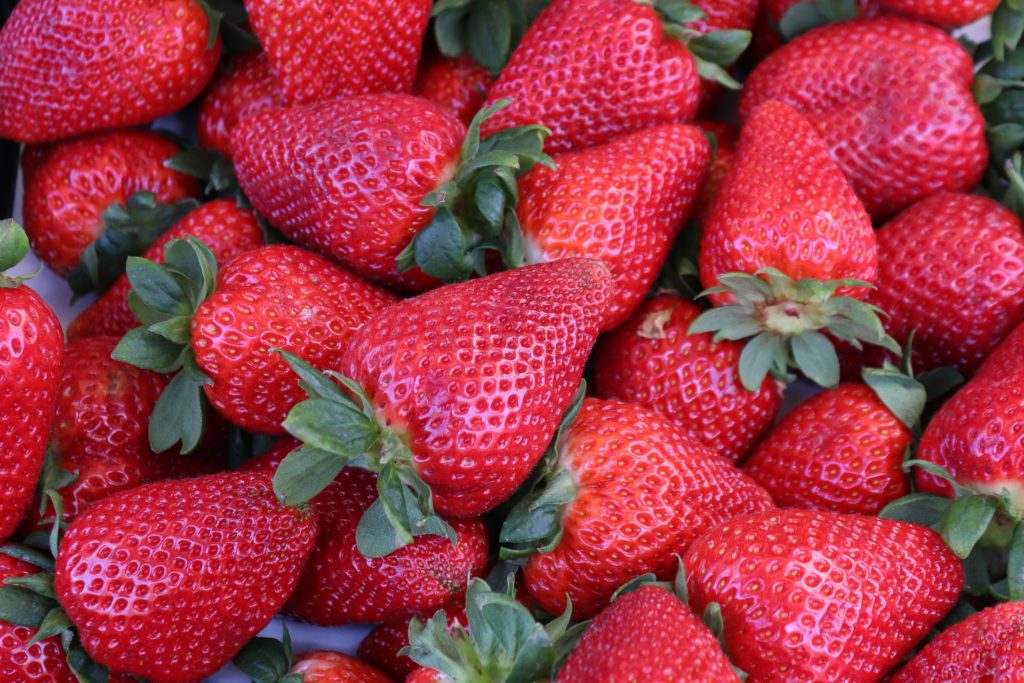
Planting bare-root strawberry plants in May allows for robust growth, leading to bountiful harvests later in the summer. Strawberries are a garden favorite due to their sweet flavor, versatility in the kitchen, and ease of growing. They thrive in well-drained soil and benefit from full sunlight, making them a welcoming addition to any garden.
Planting Tips:
Space plants 12-18 inches apart in raised beds or containers to improve drainage.
Ensure the crown of the plant is just above the soil level.
Care Instructions:
Water regularly, ensuring the soil is consistently moist but not soggy.
Use mulch to keep fruits clean and moist, preventing weeds.
Fertilize early in the growing season with a balanced nutrient source.
Blueberries
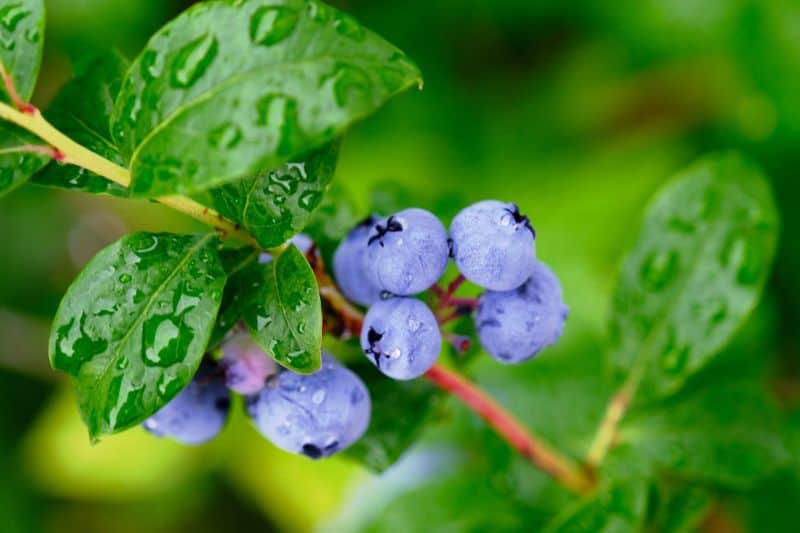
Blueberries should be planted in acidic soils, and they thrive best when their environmental conditions are optimal. They produce sweet, nutritious fruits, making them a highly sought-after fruit in gardens. Planting blueberry bushes in May allows them time to establish strong root systems before the summer heat hits.
Planting Tips:
Prepare soil with an acidic amendment like peat moss or sulfur to lower the pH.
Space plants about 3-4 feet apart for good airflow.
Care Instructions:
Water well during dry spells, maintaining consistent moisture.
Fertilize once in early spring with an acid-specific fertilizer.
Prune after harvesting to improve air circulation and future yields.
Raspberries
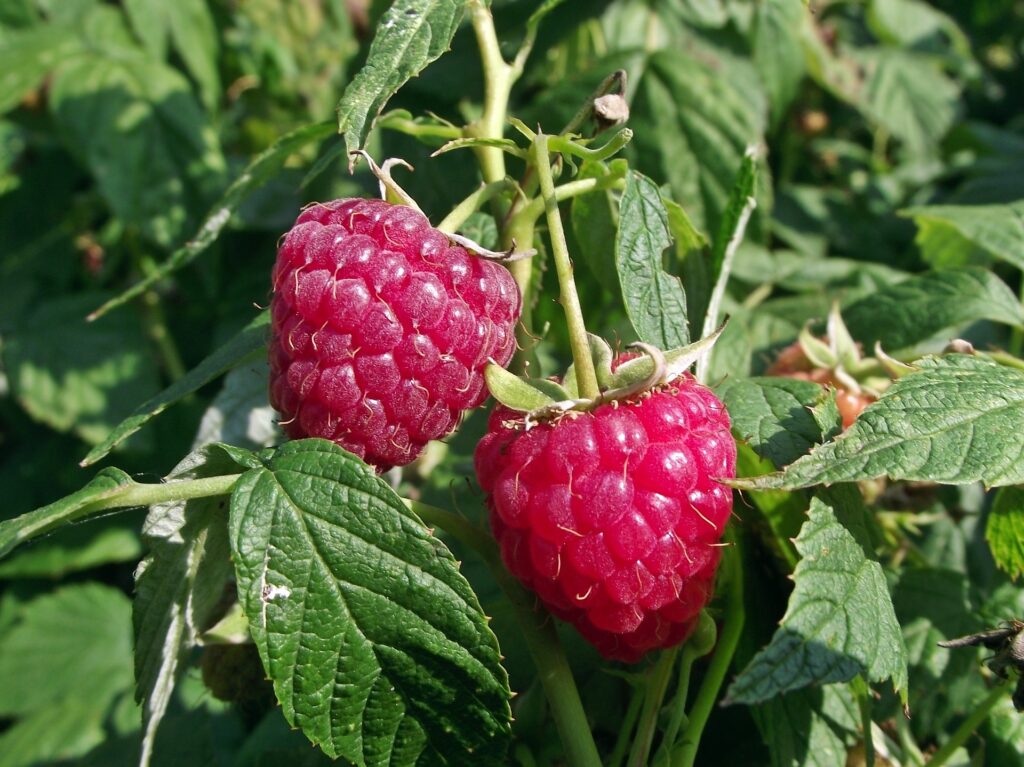
Raspberry canes should be planted in rows, maximizing air circulation while providing ample space for growth. With their vibrant, juicy fruits, raspberries are a delicious and popular choice for home gardens. As summer-bearing varieties start producing in late spring to early summer, May is the perfect time for planting to ensure a fruitful harvest.
Planting Tips:
Space canes about 2-3 feet apart to allow for healthy growth.
Water well at planting to ensure roots establish properly.
Care Instructions:
Water consistently during dry spells, particularly during flowering and fruiting.
Apply mulch to control weeds and retain moisture.
Prune spent canes in late winter to encourage new growth in the following season.
Blackberries
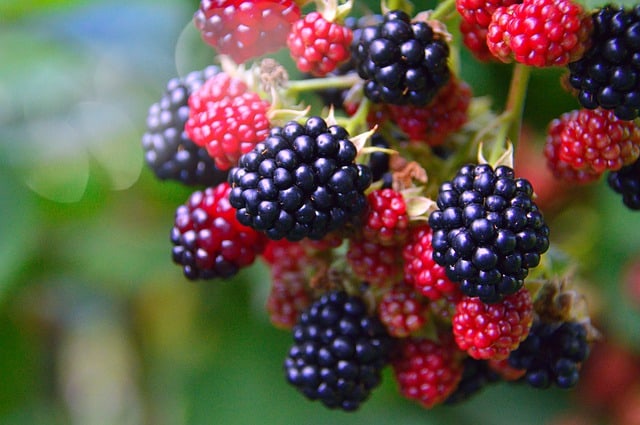
Similar to raspberries, blackberries are delicious fruits that can be easily harvested and enjoyed. Known for their sweet taste and versatility, blackberries are perfect for growing along fences or trellises to save space and ensure proper air circulation. May is a suitable time for planting blackberry canes, ensuring enough time for establishment prior to the heat of the growing season.
Planting Tips:
Space canes in a sunny location about 3-4 feet apart.
Provide a trellis system for climbing varieties to facilitate easy harvest.
Care Instructions:
Water regularly, particularly during fruiting, to enhance sweetness.
Monitor for pests and diseases, addressing issues promptly.
Fertilize with a balanced fertilizer during early planting.
Melons
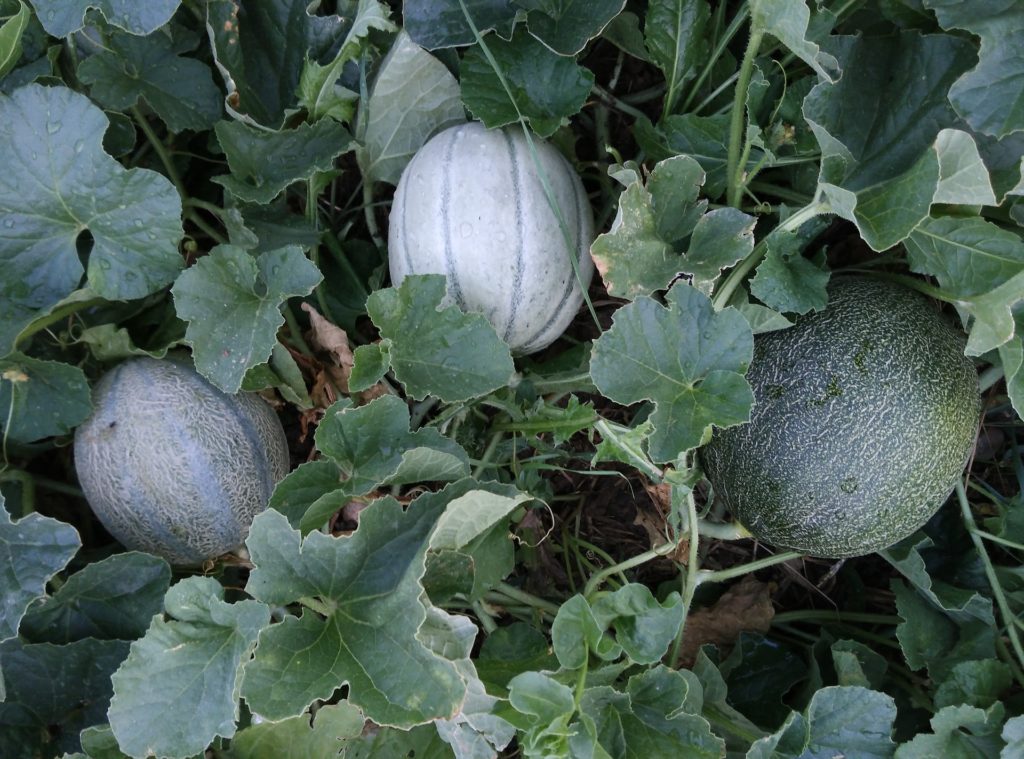
Planting watermelon and cantaloupe seeds directly in late May ensures warmth and yields satisfying results. These warm-season crops require plenty of sunshine and rich, well-drained soil to flourish. They are fun to grow and provide refreshing produce, perfect for summer gatherings and picnics.
Planting Tips:
Create mounds for planting seeds; space them 18-36 inches apart for room to spread.
Consider using black plastic mulch to warm the soil quickly.
Care Instructions:
Water regularly, particularly during flowering and fruiting stages.
Fertilize with a balanced fertilizer every few weeks after establishing.
Monitor carefully for insects like aphids and squash bugs.
Grapes
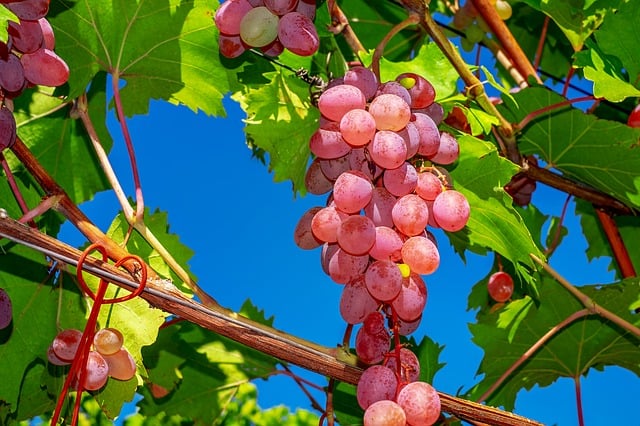
May is the ideal time to plant grapevines, particularly in sunny areas suitable for growth and ripening. Grape vines can provide delicious fruits for eating fresh or for making jams, juice, and wine. Proper care during establishment is essential for future yields.
Planting Tips:
Select a sunny location with well-drained soil; space vines 6-8 feet apart.
Plant deeply, covering the roots, and allow enough room for growth.
Care Instructions:
Water consistently until grapevines establish; they become more drought-tolerant over time.
Fertilize annually with compost or a balanced fertilizer in early spring.
Support trailing vines with trellises for easy access and space management.
Peaches
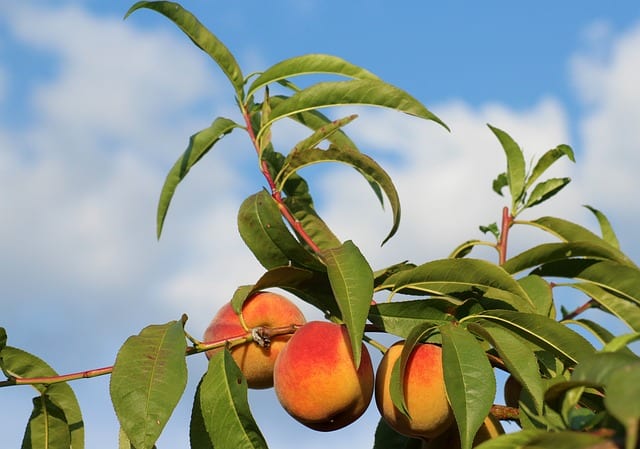
When planting peach trees, choosing the right variety suitable for your region is essential for success. Peaches are delightfully sweet and can be enjoyed fresh, canned, or baked into a variety of dishes. Planting will allow your trees to establish themselves properly before the summer heat kicks in, ensuring healthy growth.
Planting Tips:
Space trees about 15-20 feet apart, depending on the variety.
Ensure the planting hole is deep and wide for root development.
Care Instructions:
Water regularly during the first growing season.
Prune annually to maintain shape and encourage fruiting.
Fertilize in late winter or early spring with a balanced fertilizer.
Apples
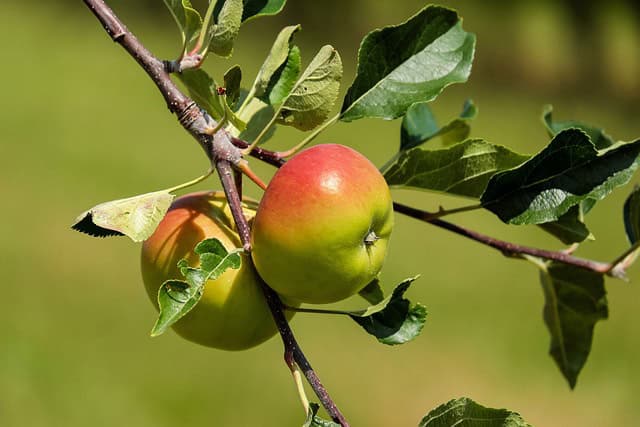
Apple trees are a delightful choice for any garden, yielding sweet and tart fruits perfect for fresh eating and cooking. Choosing disease-resistant varieties optimized for your growing region enhances the chances of successful harvests. May is an excellent time to plant young trees so they can develop strong root systems before summer.
Planting Tips:
Space trees about 12-15 feet apart for adequate growth and airflow.
Choose a well-draining area with good sunlight for best results.
Care Instructions:
Water regularly during the establishment phase and during fruiting.
Fertilize annually in early spring with a balanced fertilizer.
Monitor for pests like codling moths and apple maggots.
Pears
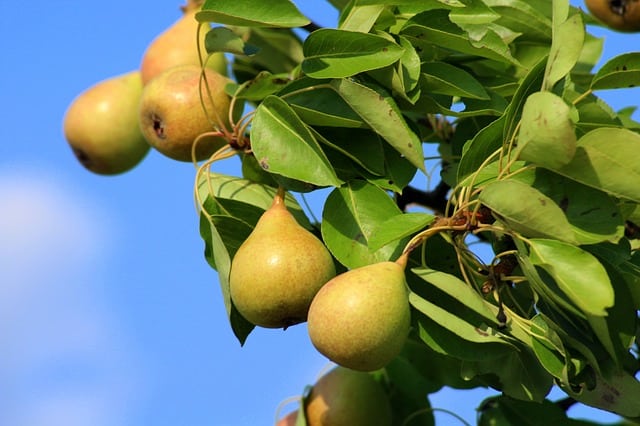
Planting pear trees is a rewarding endeavor that provides creamy, sweet fruits perfect for fresh eating or preserving. Pear trees not only enhance your garden’s beauty with their stunning foliage and flowers but also offer delicious rewards. Choose compatible pear varieties for cross-pollination to maximize fruiting.
Planting Tips:
Space them 15-20 feet apart in well-drained, sunny locations.
Provide mulch around the base to maintain moisture levels.
Care Instructions:
Water adequately, particularly in the first year to establish roots.
Fertilize yearly in early spring with balanced nutrients.
Prune annually to maintain structure and encourage fruit production.
Cherries
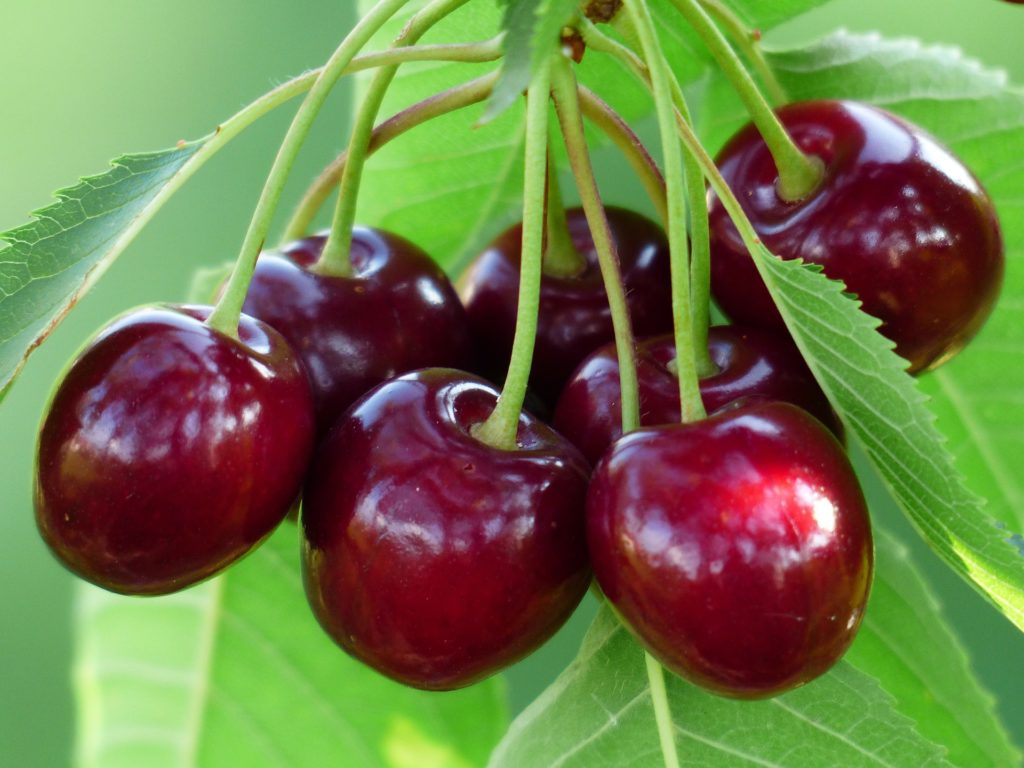
Cherries are delightful fruit trees that not only provide sweet, juicy fruits but also add seasonal beauty with their stunning spring flowers. Planting them correctly ensures strong growth and bountiful harvests. They thrive best in sunny areas with well-drained soil, making May an optimal month for planting.
Planting Tips:
Space cherries about 20-25 feet apart for ample growing area.
Provide mulch to maintain moisture levels around the roots.
Care Instructions:
Water regularly in the early years; reduce frequency as they mature.
Fertilize in spring; reduce nitrogen in favor of phosphorus and potassium for fruiting.
Protect against pests with netting during the fruiting period.
Herbs To Plant
Herbs are an essential part of many gardens, not only enhancing culinary creations but also adding aromatic beauty to landscapes. Growing herbs in your garden contributes to a sustainable gardening practice, inviting beneficial insects and biodiversity into your space. May offers excellent conditions for planting various herbs, allowing them to establish before the warm months really kick in. By selecting a range of herbs that suit your culinary preferences and garden conditions, you’ll be able to enjoy fresh flavors and scents right from your backyard.
Basil
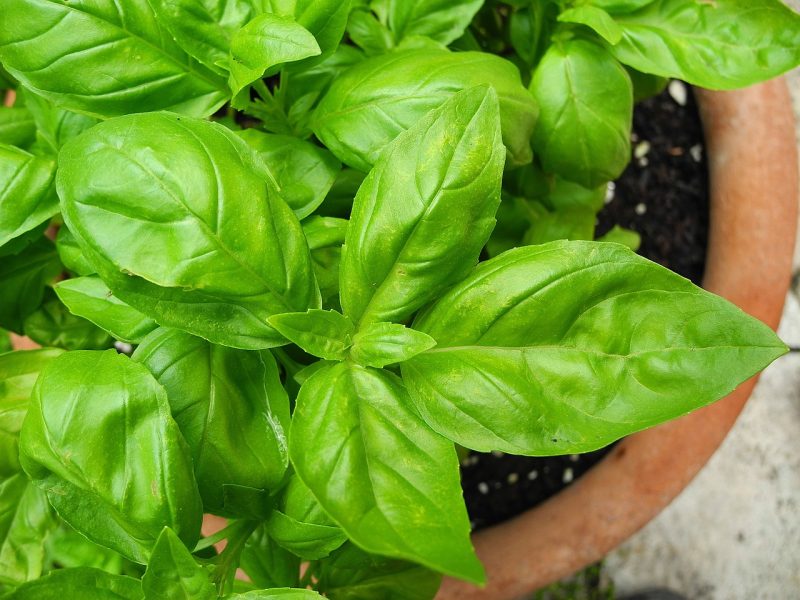
Basil is an aromatic herb that flourishes in warm temperatures and is a favorite among gardeners for its culinary versatility. Used in a variety of dishes, particularly in Italian cuisine, cultivating basil allows you to enjoy fresh flavors year-round. Planting basil in May ensures it has optimal conditions for growth during the warm months ahead.
Planting Tips:
Direct sow seeds or transplant seedlings into the garden after the last frost.
Space plants about 12 inches apart for adequate growth.
Care Instructions:
Water consistently; avoid overwatering, as excess moisture can lead to root rot.
Fertilize with a balanced fertilizer every 4-6 weeks during the growing season.
Pinch off flowers to encourage leaf growth.
Cilantro
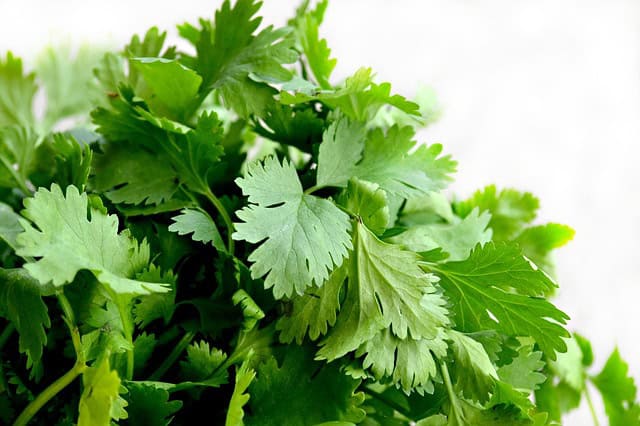
Cilantro is a cool-season herb that prefers milder weather, making early May a perfect time for planting. Known for its distinct flavor, cilantro is a popular ingredient in many culinary dishes, especially in Latin and Asian cuisines. With proper care, you can enjoy a bountiful harvest throughout the growing season.
Planting Tips:
Sow seeds directly into prepared soil, lightly covering them for good contact.
Space seeds about 6 inches apart to allow for growth.
Care Instructions:
Water consistently, ideally with a soaker hose to prevent leaf wetness.
Monitor for pests like aphids, and control them naturally or with insecticidal soap.
Harvest leaves regularly to prevent bolting.
Parsley
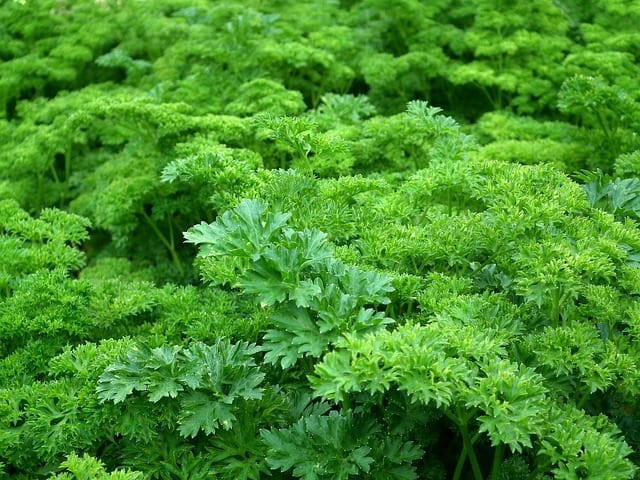
Parsley is a versatile, nutrient-rich herb that adds flavor to a variety of dishes. With its bright green foliage and decorative appearance, parsley can be used as both a culinary ingredient and a garnish in your kitchen. Planting it in May allows the plants to establish before summer heat arrives.
Planting Tips:
Sow seeds or transplant seedlings about 10-12 inches apart in rich, loamy soil.
Consider soaking seeds overnight before planting to improve germination rates.
Care Instructions:
Water regularly to keep the soil consistently moist.
Fertilize lightly with a balanced fertilizer after establishing.
Harvest leaves regularly, removing older leaves first.
Thyme
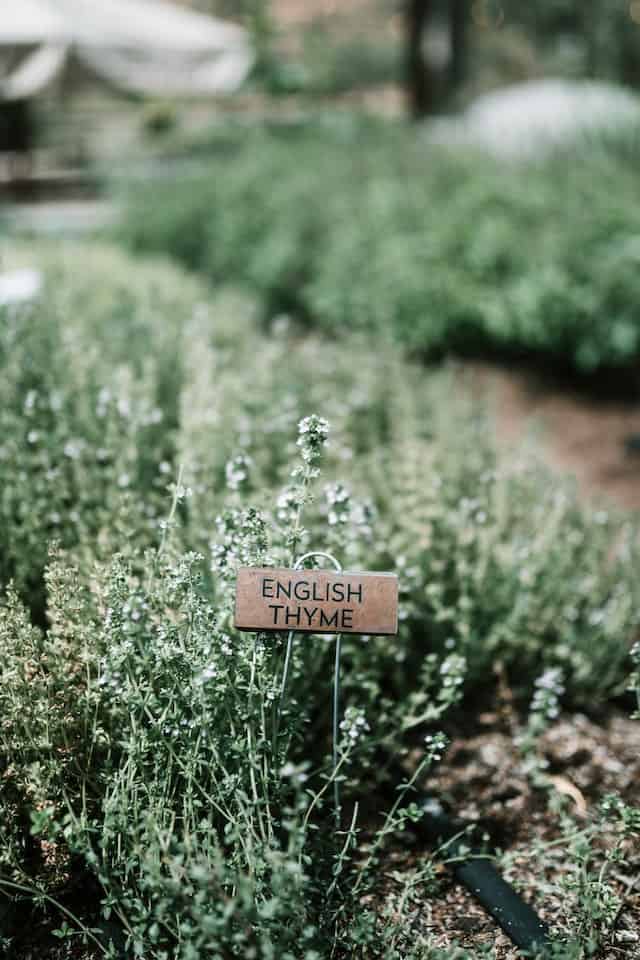
Thyme is a hardy and aromatic perennial herb perfect for culinary use. It thrives in sunny, well-drained areas, adding not only flavor but also structural beauty to gardens. May is an excellent time to establish thyme plants, as they will flourish during the growing season with minimal care.
Planting Tips:
Transplant or sow seeds in well-drained soil with full sun exposure.
Space plants 12-18 inches apart for growth and airflow.
Care Instructions:
Water infrequently but deeply, allowing the soil to dry out between watering.
Trim back after flowering to maintain compact growth.
Fertilize sparingly; thyme can thrive in lower nutrient conditions.
Sage
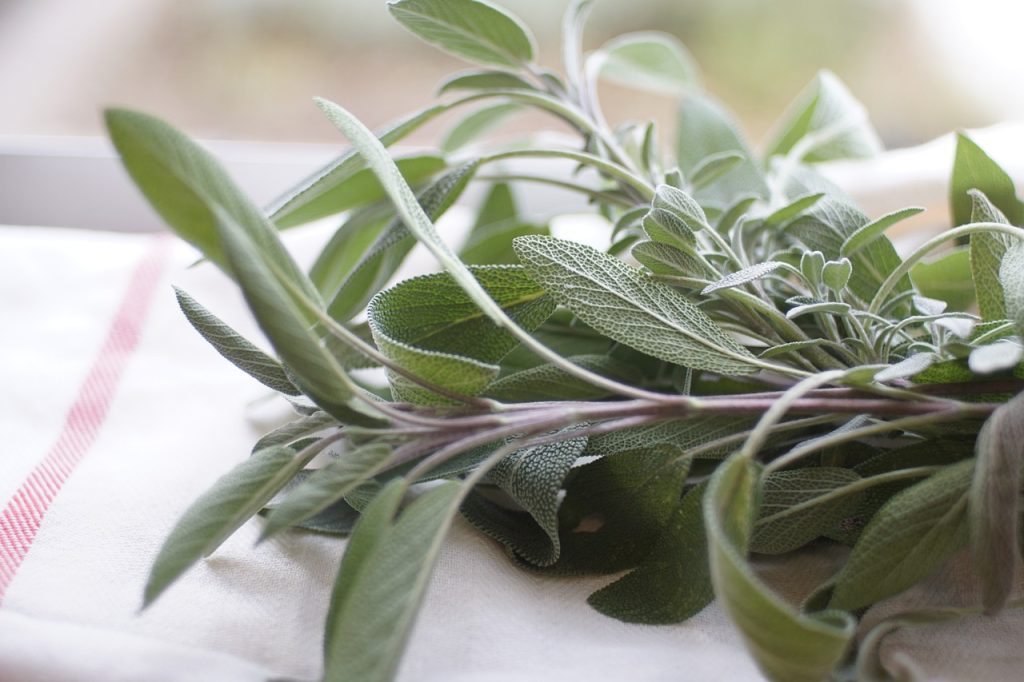
Sage is a perennial favorite that thrives in sunny environments. With a rich flavor profile, it is frequently used in meats and savory dishes. Planting sage in May allows it to establish well before summer, ensuring vigorous growth and superb flavor.
Planting Tips:
Plant 12-24 inches apart in well-draining soil with full sun exposure.
Transplant or seed outdoors after frost concerns are gone.
Care Instructions:
Water deeply but allow to dry out between watering; overwatering can lead to issues.
Prune back in late winter for increased blooms and healthy growth.
Fertilize responsively; too much nitrogen can cause excessive leaf growth and fewer blooms.
Oregano
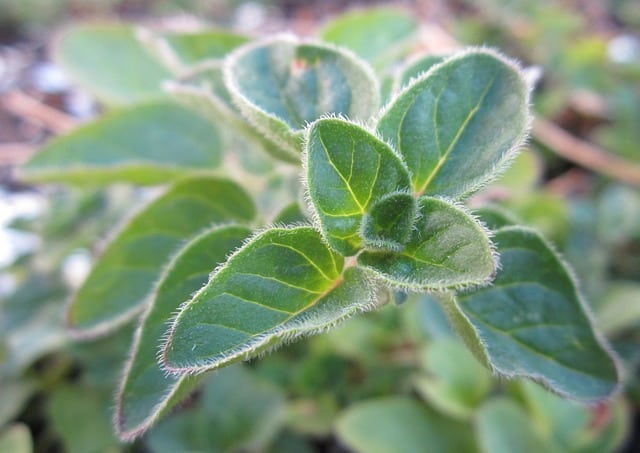
Oregano is a hardy perennial herb known for its delicious flavor, commonly used in Italian and Mediterranean cuisines. It flourishes in sunny locations and is adaptable to various soil conditions. Planting oregano in May ensures robust growth during warmer months.
Planting Tips:
Plant seeds or transplants in sunny areas with well-drained soil.
Space plants about 12-18 inches apart, allowing airflow for healthy growth.
Care Instructions:
Water moderately, allowing the soil to dry out between waterings.
Harvest regularly to prevent flowering and promote bushy growth.
Fertilize in early spring with a balanced product, avoiding over-fertilization.
Mint
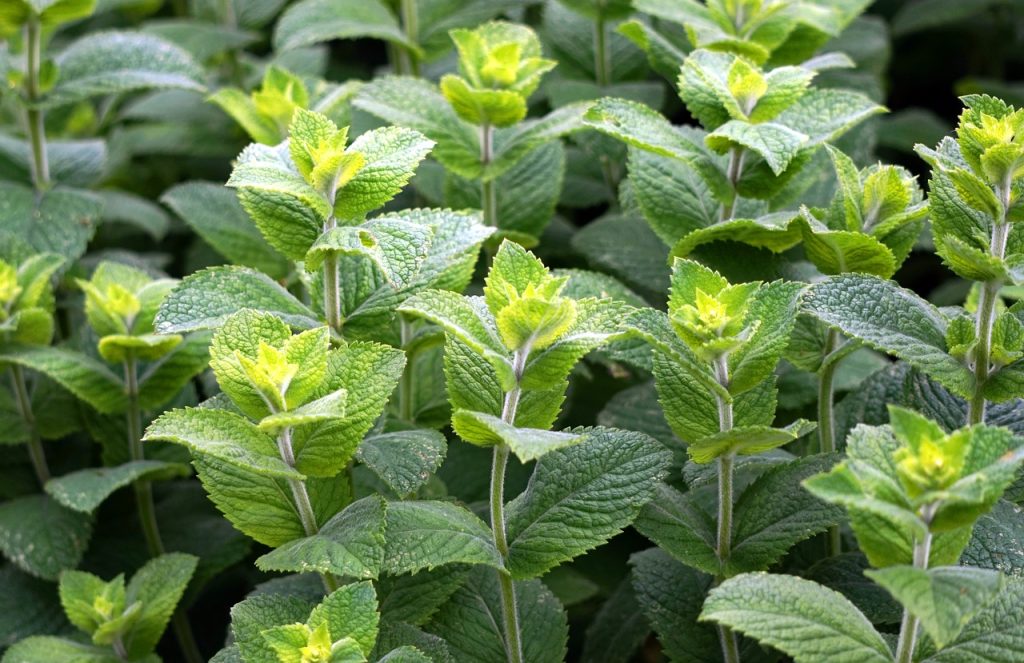
Mint can be invasive if planted directly in the garden, so it’s best to grow it in containers or well-established beds. As a refreshing herb commonly used in drinks and dishes, mint grows vigorously and thrives in moist, rich soils. Planting mint in May ensures it has time to fill out before summer’s heat.
Planting Tips:
Plant in containers to prevent spreading or in well-established garden beds.
Space plants about 12-18 inches apart in moist, rich soil.
Care Instructions:
Water consistently to maintain moist soil, particularly in sunny conditions.
Harvest leaves regularly for culinary use, and encourage continuous growth.
Trim back flower stalks to promote leaf production.
Dill
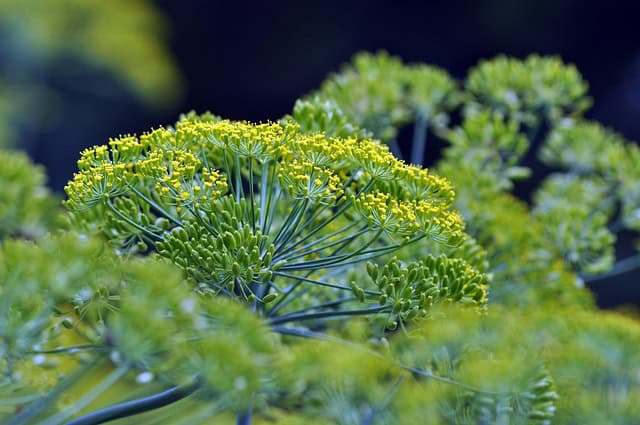
Dill is an easy-to-grow herb that thrives in warm weather, making May an ideal time for direct sowing. Known for its distinct flavor, dill pairs beautifully with pickles, salads, and fish dishes. Its feathery foliage and yellow flowers also attract beneficial insects, enhancing garden biodiversity.
Planting Tips:
Directly sow seeds in well-drained soil; space seeds about 12 inches apart.
Choose sunny spots and prepare well-drained soil.
Care Instructions:
Water regularly to keep soil moist but avoid waterlogging.
Use a balanced fertilizer monthly during growth.
Cut back regularly to encourage new growth and prevent flowering.
Chives
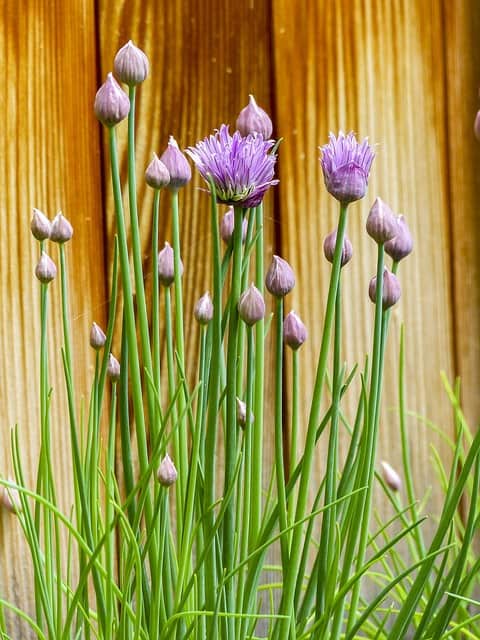
Chives are a perennial herb that’s easy to grow and contributes mild onion flavors to dishes. Their tall, thin leaves and purple blooms add both flavor and beauty to gardens. Planting chives in May provides sufficient time for growth, resulting in more flavorful harvesting throughout the season.
Planting Tips:
Plant seeds or divisions about 12 inches apart in sunny or partially shaded areas.
They thrive in rich, well-drained soil.
Care Instructions:
Water regularly and consistently, allowing the soil to dry slightly between waterings.
Fertilize lightly with a balanced fertilizer if growth appears slow.
Harvest by cutting leaves carefully; regular harvesting encourages growth.
Lemon Balm
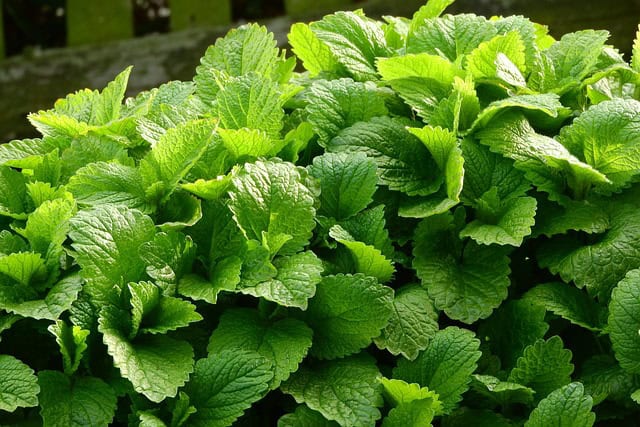
Lemon balm is a delightful herb known for its refreshing fragrance and flavor. Its leaves can be used in teas and desserts, as well as in medicinal applications. Lemon balm prefers sunny or partially shaded areas, and planting it in May allows it to establish a strong root system during mild temperatures.
Planting Tips:
Space plants 24 inches apart in rich, well-drained soil with both sun and shade exposure.
Established plants can be divided every few years for vigor.
Care Instructions:
Water regularly but allow the soil to drain well; they prefer slightly moist conditions.
Prune after flowering to maintain bushy growth.
Fertilize sparingly, as they thrive in moderately rich soils.
Landscape Plants To Plant
Creating a beautiful landscape in Zone 6 involves selecting plants that not only flourish but also fit the aesthetic vision for your outdoor space. May is an ideal time for establishing these landscape plants, as the warming temperatures and improved soil conditions provide an encouraging environment for growth. By incorporating a mix of trees, shrubs, perennials, and annuals, gardeners can create gardens that provide color, texture, and interest throughout the seasons.
Ornamental Grasses
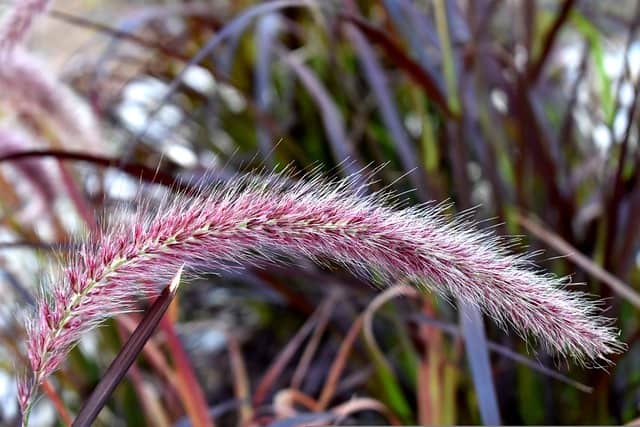
Ornamental grasses provide texture and visual interest in gardens, making them a popular choice among landscapers and gardeners. These hardy plants are versatile and can be used for borders, mass plantings, or as focal points in landscaped areas. They thrive in well-draining soil and full sunlight, and with minimal care, they can add beauty to your garden for years to come.
Planting Tips:
Space plants based on mature size—larger varieties need more room (30-36 inches apart).
Select areas with full sun for best growth.
Care Instructions:
Water regularly until established, then they often require little care.
Cut back in late winter to encourage healthy new growth.
Monitor for pests like aphids during peak summer heat.
Boxwood
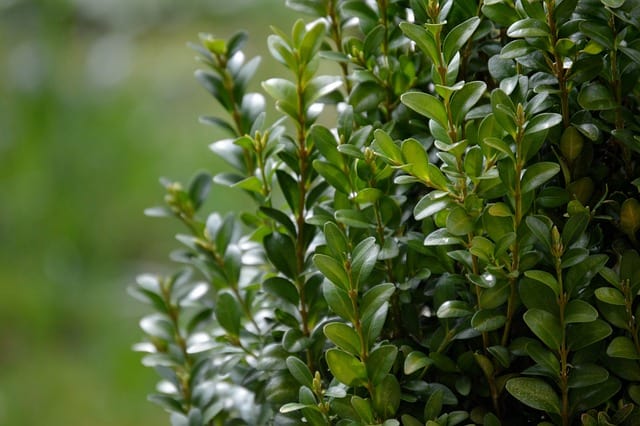
Boxwood is a classic choice for hedges and formal gardens, known for its dense foliage and versatility. Boxwoods can be shaped and pruned to create elegant designs, making them a favorite among landscapers. They prefer well-drained soil and thrive in partial to full sun, providing year-round color and structure to your garden.
Planting Tips:
Space plants 12 to 18 inches apart for dense hedges.
Choose a well-drained area with partial to full sun exposure.
Care Instructions:
Water deeply but less frequently to promote deep root growth.
Prune in late spring or early summer to maintain shape and density.
Apply organic mulch around the base to retain soil moisture.
Hydrangeas
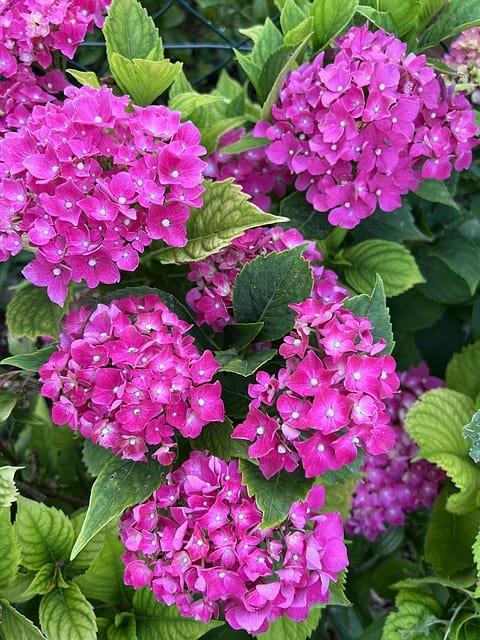
Hydrangeas offer stunning blooms that add vibrant color and texture to any garden. They come in various shapes, colors, and sizes, making them versatile enough for different garden styles, from cottage gardens to formal landscapes. Planting hydrangeas in well-drained soil and providing adequate moisture will ensure they thrive throughout the summer.
Planting Tips:
Plant in well-drained, acidic soil; space them about 3-10 feet apart, depending on variety.
Choose locations with partial shade, particularly in hot climates.
Care Instructions:
Water well during dry spells, especially as blooms develop.
Fertilize in spring with a slow-release fertilizer designed for flowering shrubs.
Prune spent flowers to tidy up and encourage new growth.
Japanese Maple
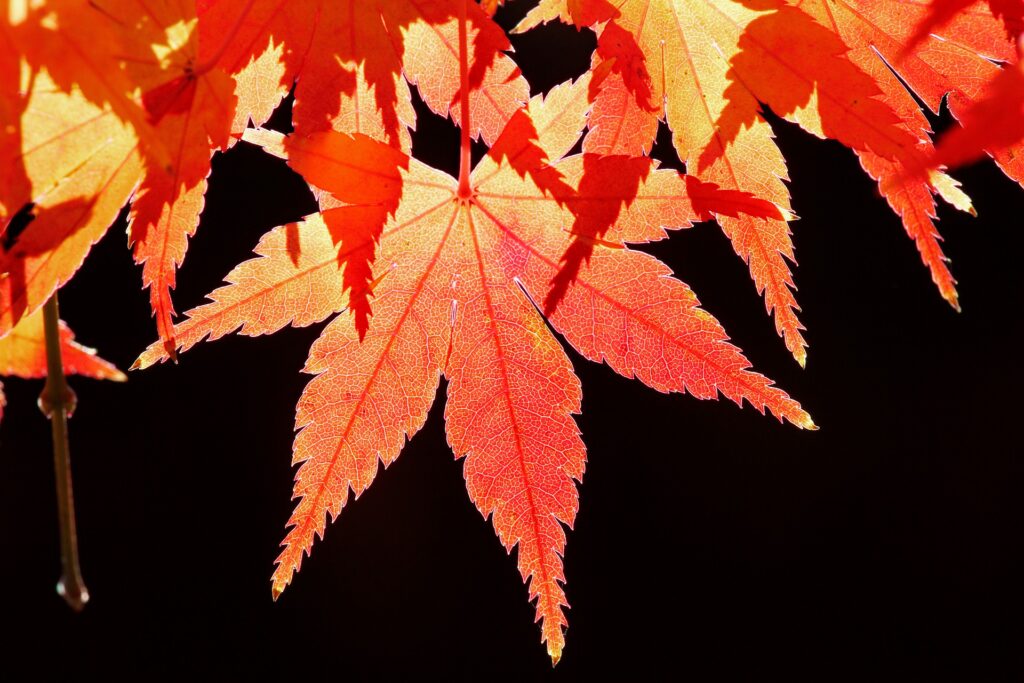
Japanese maple trees are highly regarded for their beautiful foliage and graceful branching structure. They come in a variety of shapes and leaf colors, making them ideal focal points in landscape designs. Planting them in May allows for root establishment throughout the growing season, leading to healthier and more resilient trees.
Planting Tips:
Space saplings about 10-15 feet apart in moderately well-draining soil.
Choose shaded or partially shaded areas to prevent leaf scorch.
Care Instructions:
Water regularly during the first few years until established.
Fertilize in early spring with a slow-release fertilizer.
Monitor for pests like spider mites, particularly in hot, dry conditions.
Hellebores
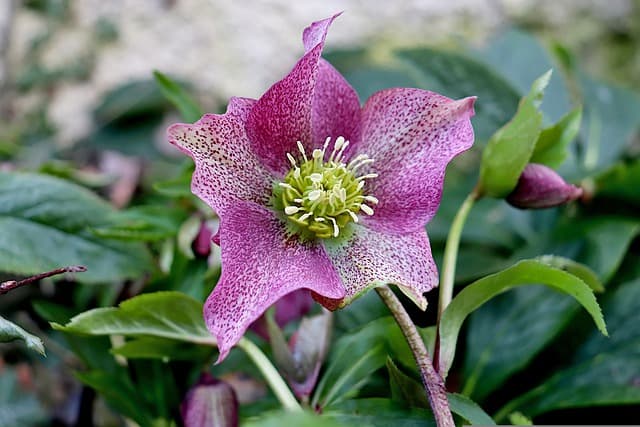
Hellebores are excellent for shaded gardens and early spring blooms. These hardy perennials offer beautiful flowers and lush foliage, making them a valuable addition to low-light landscapes. Planting them in May gives them adequate time to establish before blooming once spring arrives.
Planting Tips:
Space plants about 18-24 inches apart in rich, well-drained soil.
They work well in shaded gardens or near other shade-loving plants.
Care Instructions:
Water regularly to maintain moisture, particularly during dry spells.
Fertilize lightly in spring with an organic-based fertilizer.
Remove old foliage to enhance aesthetic appeal and improve air circulation.
Dogwood Trees
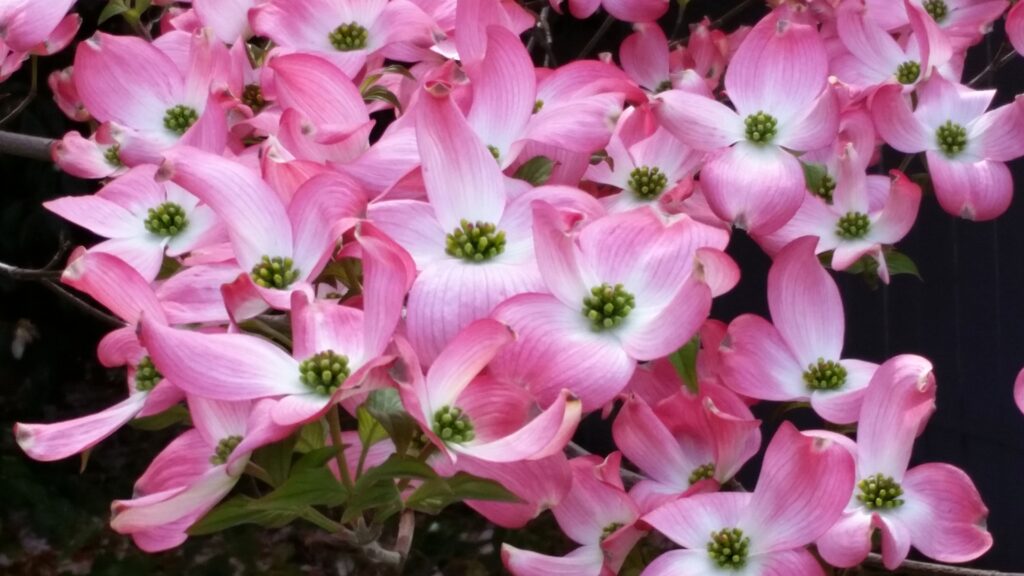
Dogwood trees are popular for their stunning spring blooms and can be a focal point in any landscape. Their distinctive flower bracts add seasonal interest, while their sturdy structure provides shade and beauty throughout the year. Planting in May gives these trees ample time to establish root systems before the summer heat.
Planting Tips:
Space trees about 20 feet apart in fertile, well-draining soil.
Ensure they are positioned in partial shade to avoid leaf scorch.
Care Instructions:
Water regularly throughout the growing season.
Fertilize with a balanced product in early spring to boost growth.
Monitor for pests and diseases, particularly during blooming seasons.
Azaleas
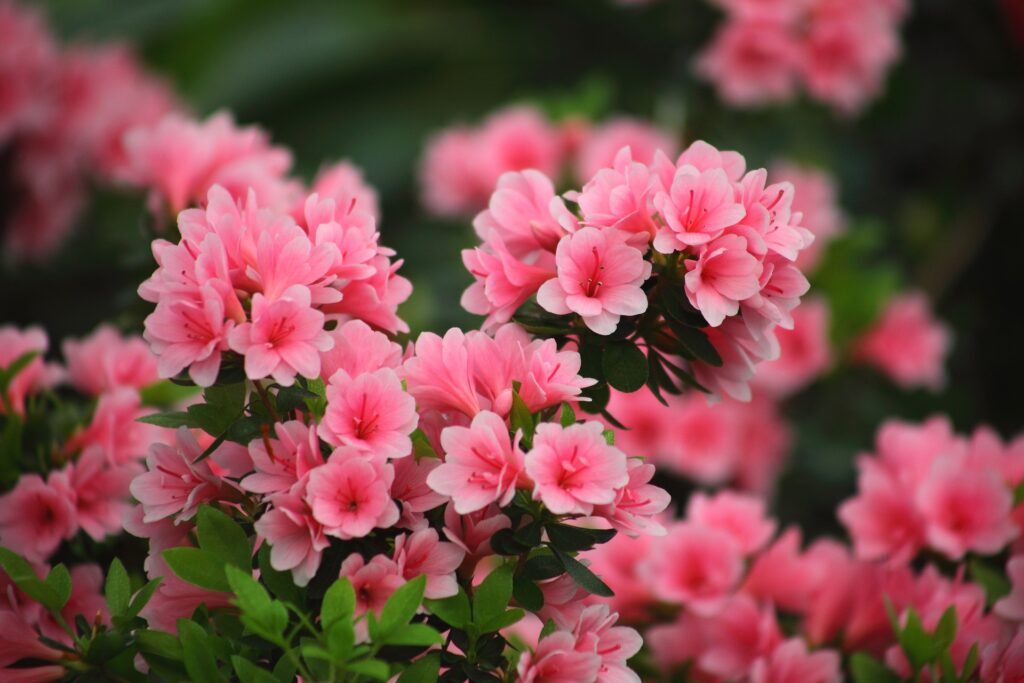
Azaleas contribute vibrant colors and lush foliage to landscapes, making them a favorite choice for flower gardens. These shrubs thrive in acidic, well-draining soils and prefer partially shaded areas, allowing them to flourish during the warmer months. Planting in May ensures optimal conditions for blooming later.
Planting Tips:
Space plants about 2-3 feet apart in acidic, well-drained soil.
Choose partially shaded areas for optimal blooming.
Care Instructions:
Water regularly, ensuring moisture without pooling.
Apply mulch to help retain moisture and regulate soil temperature.
Prune promptly after flowering to maintain shape and density.
Rhododendrons
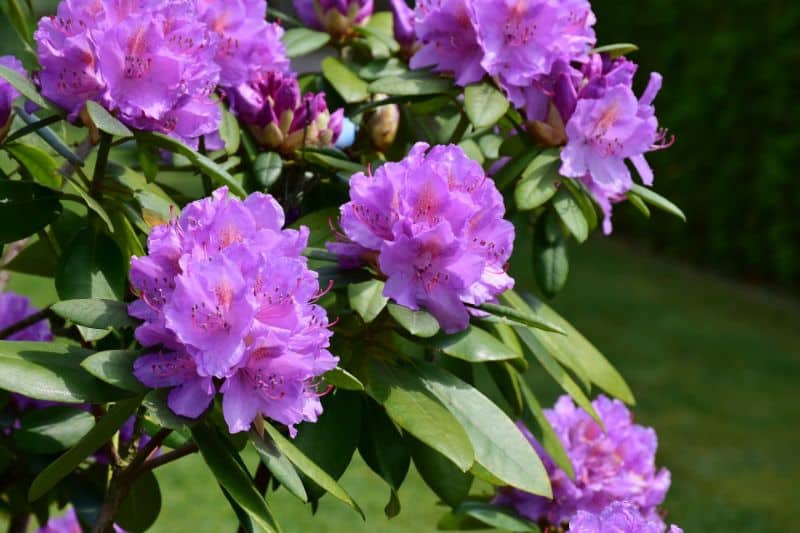
Rhododendrons produce enduring blooms and offer evergreen interest throughout the year. These striking shrubs can provide an eye-catching display in your landscape, pairing well with other perennials and shrubs. Planting in May allows them to establish healthy root systems ahead of the growing season.
Planting Tips:
Plant in semi-shaded spots with acidic, well-drained soil, spacing them 3-5 feet apart.
Prepare large holes to encourage root growth.
Care Instructions:
Water regularly, particularly during dry conditions.
Fertilize in spring with an acid-loving plant fertilizer.
Monitor for pests and diseases that may afflict them in humid weather.
Perennials

Incorporating perennials can create a lasting landscape with blooms throughout summer. Their ability to return year after year provides a sustainable solution for garden aesthetics and habitat for wildlife. By selecting a mix of species, gardeners can ensure continuous and varied blooms, as well as enrich their outdoor spaces.
Planting Tips:
Space perennials based on their growing habits, keeping airflow in mind.
Plant groups of the same species to enhance visual impact.
Care Instructions:
Water deeply when establishing; switch to drought-tolerant watering regimes once settled.
Fertilize in spring with a balanced fertilizer.
Divide overgrown perennials every 3-5 years.
Evergreen Shrubs
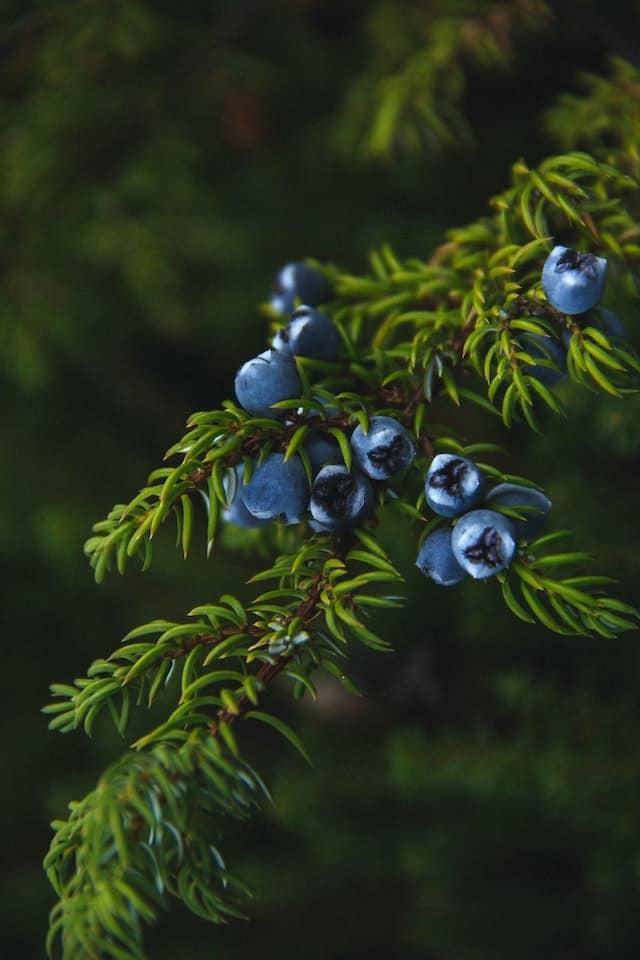
Evergreen shrubs provide year-round coverage and can be established in well-drained soils. These plants add structure to landscapes and create beautiful backdrops while supporting local wildlife. Planting them in May allows for establishment and significant growth throughout the summer.
Planting Tips:
Space shrubs based on their mature width, ideally at least 3-4 feet apart.
Choose moist, well-drained soil and prefer sunny locations.
Care Instructions:
Water regularly, particularly during dry spells in summer.
Mulch around the base in spring to retain moisture and suppress weeds.
Prune as necessary to maintain healthy shape and airflow.
FAQ
What are the average frost dates for Zone 6?
In USDA Zone 6, the last frost typically occurs between mid-April and early May, with the first frost typically occurring in October. Always monitor local weather trends to adapt planting schedules.
Can I plant vegetables and flowers at the same time?
Absolutely! Vegetables and flowers can thrive together. Companion planting enhances growth and pest resistance, leading to a more diverse and productive garden.
Should I use mulch after planting seedlings in May?
Yes, applying mulch after planting can enhance moisture retention, suppress weeds, and maintain a consistent soil temperature, contributing to successful seedling establishment.
How can I prepare the soil for planting in May?
Preparing your soil for planting involves thoroughly tilling the earth, testing for pH, adding organic matter, and ensuring good drainage. Consider incorporating compost or well-rotted manure for nutrient enrichment.
How do I know if my plant selections are compatible?
Researching the specific growing conditions for each plant, including sunlight, watering needs, and efforts to combine varieties that enhance one another will guide effective compatibility.



